

Travel To Kyrgyzstan: An Independent Woman’s Guide
If you’re considering travel to Kyrgyzstan, get ready for the trip of a lifetime: this two-week journey did not leave me unchanged, and is one of the few places that hasn’t yet been replaced on my list top 10 adventures.
Kyrgyzstan remains one of the wildest countries on earth, an amazing adventure if you’re looking for ancient nomadic traditions wrapped in extraordinary natural beauty.
This landlocked country in Central Asia was once part of the Soviet Union, and that isolation in some perverse way contributed to preserving its culture as part of the Great Silk Road. So did its difficult terrain – it is dominated by the Tien Shan mountains, whose snowy peaks and alpine lakes give it a rough natural, almost otherwordly, beauty.
A highlight of Kyrgyzstan was its diversity, the mix of religions and ethnicities providing an unusual culture of tolerance in the region.
Kyrgyzstan is where you can disconnect from the world, and for a few days, you may feel plunged into a storybook tale of wild horses, cozy yurts, and a nomadic way of life whose survival is very much in question.
This article details my trip, helps you re-create it if that’s what you would like, and provides detailed information about traveling to Kyrgyzstan, especially if you are solo and over 50.
Where is Kyrgyzstan, anyway?
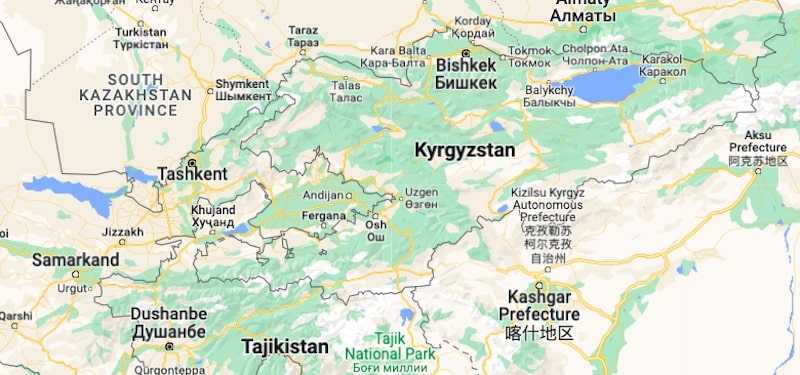
Kyrgyzstan has the dubious distinction of being further from the sea than any other country in the world.
That said, it has its own inland near-sea, Lake Issyk-Kul, the world’s second largest salt-water lake after the Caspian Sea. The Kyrgyzstan range is everywhere, but the country often feels strangely flat as you race across the plains which the mountains hug in a protective circle.
It is a relatively small country : the Kyrgyzstan population is around 6.7 million people, similar to Paraguay, which is twice the size.
A quick look at Kyrgyzstan history
Kyrgyzstan has an amazingly bumpy history , having been fought over by clans and nations for centuries. It sits astride the Silk Road , along which East-West trade long traveled. Its people are in large part descended from the tribes of Siberia but their faces reflect the great migrations of Asia, the Slavic countries and Europe.
Roughed up by the Mongols, the Manchu and the Uzbeks, Kyrgyzstan fell under Russian domination in the late 1800s, an uneasy relationship that spawned rebellions and migrations .
Through much of the 20th century Kyrgyzstan was part of the then-Soviet Union, an arrangement that ended only with the country’s independence in 1991. Not everyone in Kyrgyzstan thought independence was a good thing, and many older people remember the Soviet era with nostalgia. If you’re a fan of Soviet memorabilia, you’ll be well-served here.
Since independence, things haven’t exactly been calm: a popular uprising, economic hardship, vanishing social services, ethnic clashes in the South, growing Islamic fundamentalism and the recent attempts of the government to suppress it, all these have contributed to making people feel insecure. And it isn’t a wealthy country, with poverty quite visible once you leave the expat enclaves of the Kyrgyzstan capital, Bishkek.
Despite this, Kyrgyzstan remains a regional bastion of diversity and tolerance , at least for now. That said, many foreign countries are rushing to build shiny new mosques in many villages, to the happiness of some but the concern of others.
Meantime, Russia isn’t far, and stands by waiting to ‘help’ if it is ever needed. These days, with the war in Ukraine, Kyrgyzstan has become a major “re-exporter”, channeling goods to Russia while that country faces international sanctions: Kyrgyzstan’s exports to Russia have reportedly doubled since the war.
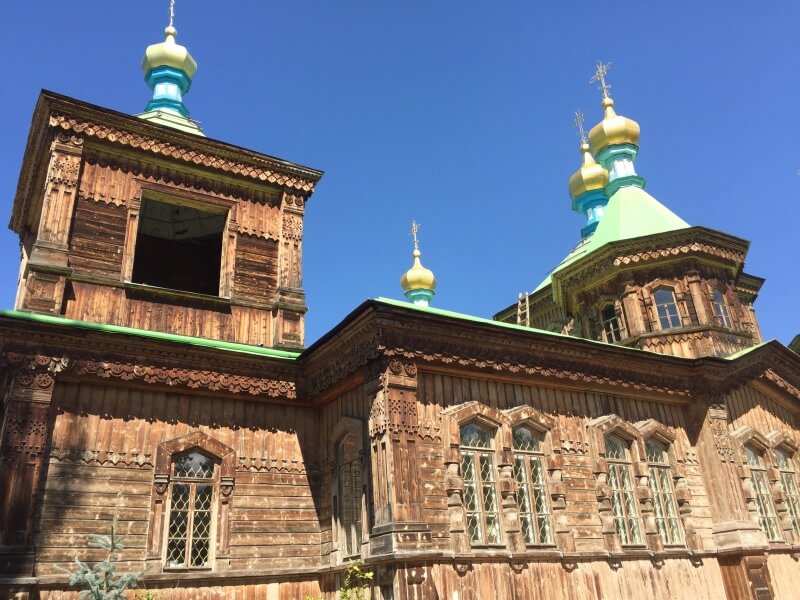
Getting to Kyrgyzstan
Not too many airlines fly to Bishkek – I used Turkish Airlines, and Pegasus Airlines also has flights to Kyrgyzstan from Europe.
You can also cross into Kyrgyzstan by land but only through certain borders from China , Kazakhstan, Tajikistan and Uzbekistan . You can no longer take the train from Moscow.
The visa situation has evolved quickly in recent years. These days, citizens of most Western countries do not need a visa if they’re staying less than 60 days. You can check whether you need one on this page and if so, submit your application electronically through the same portal.
How safe is Kyrgyzstan for solo women?
Traveling in Kyrgyzstan is relatively safe and straightforward for women .
The low-level street harassment so prevalent in some countries is absent here, and while attitudes towards women can be incredibly traditional (bride kidnappings, for example), customs apply to local women, not foreigners.
In Bishkek, I worried about the packs of roaming dogs hanging around for food, and in the countryside, some of the roads were vertiginous. Otherwise, I never felt unsafe while I was there.
Getting around Kyrgyzstan
Kyrgyzstan is a wonderful place to push your boundaries but if I were a new traveler, I might consider a more “trodden” destination to sharpen my solo travel skills – the mountains are high, the roads a bit daunting, and some toilets look like they should belong more to fiction than reality.
That said, if you’re a bit travel savvy and can get yourself from A to B even if you don’t speak a word of the language, a Kyrgyzstan vacation is an adventure you’ll never forget. I haven’t.
Best time to visit Kyrgyzstan
Kyrgyzstan tourism is a government priority and that may mean some infrastructure improvement.
As for the weather, winters can be frigid, and roads snowy and impassable. Some of the loveliest mountain destinations can only be reached once the snow melts.
For a varied journey, aim for mid-May to mid-September, but the closer you get to summer (July and August), the better the weather – and the scenery. Everything is lush and green, and while you’ll still need to wear a fleece at night in the mountains, the weather is gorgeous.
Money matters
The Kyrgyzstan currency is the som (KGS), and you’ll have no trouble exchanging US dollars and Euros. There are plenty of ATMs in the capital, Bishkek, and in other larger towns. However, don’t expect to use your credit or debit card much – this is still a cash economy, so get some of those Soms as soon as you land.
Getting online
Intriguingly, Kyrgyzstan has both the best and the worst internet. It has the best internet in Central Asia, but in some parts of the country, you cannot even get a phone signal, let alone get online. And that is part of Kyrgyzstan’s attraction…
Transportation in Kyrgyzstan
If you’re an expert traveler and accustomed to wandering off the beaten path solo, you can make your own transportation arrangements across Kyrgyzstan.
- Travel in shared taxis, which usually carry 4-5 passengers, is common
- Many people ride marshrutkas , minivans that ply predetermined routes, a bit like a bus
- You can also rent a car, either on your own or with a driver (a driver is highly recommended, given the state of the roads once you leave the main highways).
If you’re using public transport, you won’t be particularly comfortable. You may bump around a lot, and you’ll probably be either hot or cold, depending on the season.
If you’re traveling when the Kyrgyzstan weather isn’t perfect, check your vehicle, especially the tires. Kyrgyzstan safety standards can at times be questionable and while most main roads are asphalted, many mountain roads are not – and narrow dirt roads on mountainsides are ‘interesting’ enough without rain, snow or bald tires.
Use CBT to get around
This is my preferred option in Kyrgyzstan.
CBT stands for Community Travel Organization, a group launched in May 2000 to improve rural living conditions in remote areas by developing sustainable tourism. The group has 15 member organizations throughout the country, and they handle all local arrangements.
They organized the more rural segments of my visit, and their community approach meant they worked with local groups throughout, redistributing the money you spend in the country rather than repatriating it to wealthy companies located abroad.
It worked beautifully. I had a driver and a guide (for what I considered a very fair price) and they handled all the arrangements in places I might not have been able to reach on my own in the timeframe I had. They set up transport, homestays , staying in yurts, visits to artisans, and provided general Kyrgyzstan travel advice.
If you’d rather be mostly on your own, they can organize a car and driver for you but beware, the driver may not speak English. Make sure you have a translation app with you that doesn’t require an Internet connection! I also had a translator who came along.
Top places to visit in Kyrgyzstan
Kyrgyzstan is not stuffed with cultural high points or monuments, but it does have a fascinating history and several interesting sights – most people come for the physical beauty and ancient nomadic culture.
You can visit those endless Kyrgyzstan mountain ranges and vast, captivating areas of wildness from the warmth of a vehicle – or you can go on a hike or a horse trek, both of which are hugely popular. Just make sure you have a guide because these are not mountains you want to wander into on your own.
And if you’re feeling less adventurous, head for one of the alpine pastures, plunk yourself in a yurt, and be mesmerized by the scenery…
Kyrgyzstan places to visit
During my visit I crisscrossed the country and visited most regions, except a few of the ones too far to reach in the time I had.
Here are some of my top things to do in Kyrgyzstan:
- Visit the capital city of Kyrgyzstan, Bishkek , with its Soviet vibe, major monumentalia, wide utilitarian avenues – combined with a certain energy and friendliness. And, for some reason, lots of bubble tea. Walk around on your own, or take a walking tour of Bishkek .
- On day trips from Bishkek , visit the 11th-century Burana tower or Ala-Archa Gorge .
- Lake Issyk-Kul , whose northern shore is the country’s most popular (with former Soviet citizens) resort, a bit worn and spreading outward rapidly. An intriguing stop is Ruh-Ordo in Cholpon-Ata, an outdoor celebration of Kyrgyzstan culture. The lake itself is enormous and ringed with mountains and the drive around it is incredibly pleasant. If you don’t have the time, you can drive to its western tip from Bishkek in four hours or so and stay at the Bel-Tam Yurt Camp, a lovely introduction to yurt-sleeping. (This camp has sit-down toilets – most don’t, so get used to the thought of squatting).
- Karakol and Kochkor both have a frontier feel to them. Karakol is culturally diverse, with a Chinese mosque and Russian Orthodox church not far from one another, whereas Kochkor is the jumping-off point for the mountains around Lake Song-Kul, one of the best places to visit in Kyrgyzstan.
- Jeti-Ögüz is an ochre hill formation near Karakol, quite pretty but more interesting (to me) is the nearby Soviet-era sanatorium, which probably hasn’t changed much since the 1930s (I couldn’t enter). Beautiful views all around.
- Lake Song-Kul , one of the most magical spots on earth (see box below).
- Kyzyil-Oy , which means ‘red bowl’, is a tiny village in a deep canyon, attractively set among the greenery. You can easily find a homestay for the night in this picturesque Kyrgyzstan landscape.
- The city of Osh , which many visitors don’t get to because it isn’t on the way to anywhere (unless you’re heading overland to Uzbekistan), is one of Central Asia’s oldest cities. It is a harrowing 8-12 hour drive from Bishkek by shared taxi, or you can take a short flight (doesn’t feel much safer). Climb the holy Mt Sulaiman-Too for a view of the city and visit the market. Osh has a distinct Mediterranean feel to it, it’s louder and brasher than Bishkek, a friendly city that has a bustling openness about it. That said, this is where the worst of the ethnic clashes took place a few years ago, pitting the city’s two ethnic groups – Kyrgyz and Uzbek – against one another in a bloody conflict no one wants to talk about or even remember.
The Magic of Lake Song Kul, Kyrgyzstan
Lake Song-Kul is the world’s second-largest alpine lake and a magical stretch of water high above the country. It is ringed by high snow-capped mountains, and far enough away from ‘civilization’ to not even get a mobile phone signal.
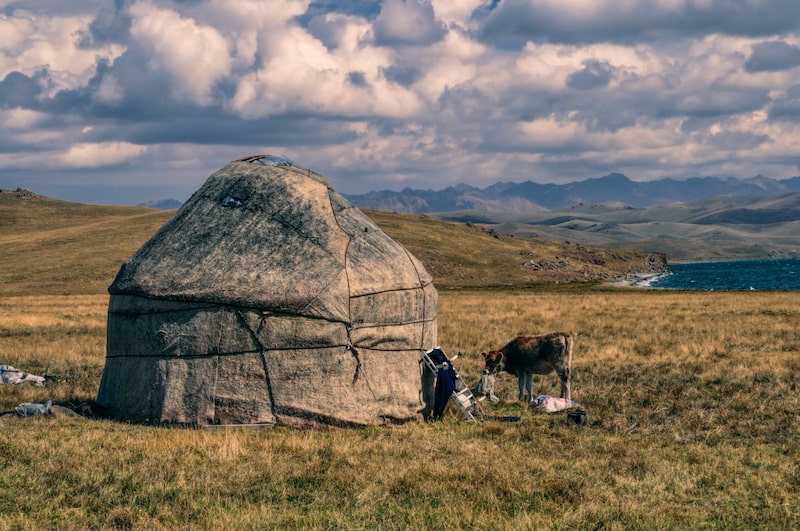
Beware of the road up to the lake and back if you suffer from vertigo: you’ll spend a lot of time staring at your feet.
The small town of Kochkor is the jumping-off point for the region, with rental vehicles ferrying visitors up the 1300 meters (4300ft) from the valley below.
To start my Kyrgyzstan yurt stay, my hostess, Asel, prepares my bedding. The yurt is heated, a luxury which is in slight contrast to the upright turquoise metal box that serves as my outhouse.
At night, I listen to the lake lapping the shore and fires crackling. I crawl out for a last look at the sky. The earlier rain has washed away the clouds and I’m left with a trillion stars, unblemished by electricity.
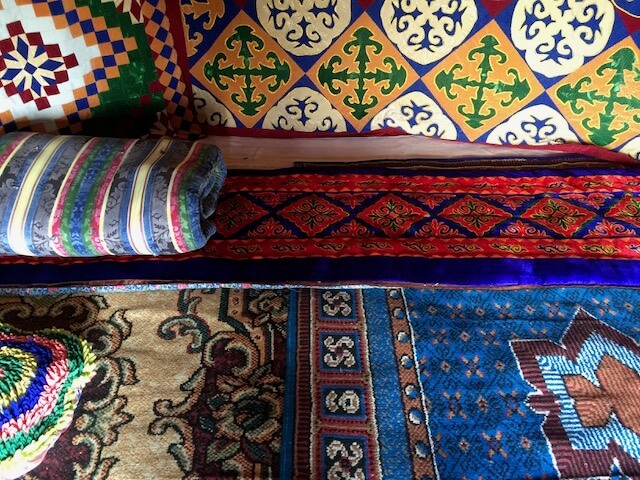
The next morning, people are beginning to pack – it’s the end of the season. Women disassemble their yurts and fold them up for next winter, waving their children off for the ride down the mountain and a new school term.
Soon , we leave the yurt camps and the lake behind and follow a faint track, which becomes fainter as we advance.
My driver, Bushbek, waves vaguely towards some distant mountains and sets off cross-country towards them.
Occasionally, we stop at a yurt to ask for directions. As always, we are invited in for tea and snacks, and an arm points in one direction or another.
After an hour or two, we shriek joyfully when a ‘real’ road makes an appearance. We finally know where we are: at the top, heading down.
From the pristine shores of the lake, we are now coughing in the swirling dust of coal trucks from a local mine.
This is why Kyrgyzstan holidays are so intoxicating: there’s a surprise around every corner, and no two corners alike.
10 experiential adventures in Kyrgyzstan you’ll remember
1. Your house will come down every year A Kyrgyzstan yurt is where many people live in the mountains during summer; during the harsh Kyrgyzstan winter, they pack it up and head home to their village. Staying in a yurt will give you a powerful nomadic experience, especially if you’re there at the beginning or the end of the season.
2. Things roam wild and free Kyrgyzstan is a haven for wildlife. You may spot eagles, bears, wolves, or lynxes. Among the rarer animals are the glorious Snow Leopard, Marco Polo sheep, and the Siberian Ibex.
3. High altitude sensations will chase you through the Pamir and Tian Shan More than 80% of Kyrgyzstan is above 1000 meters, and nearly half of it soars to more than 3000 meters. Many visitors hire a professional guide to tackle one of the three soaring summits that break the 7000-meter barrier: Lenin Peak, Jengish Chokusu Peak, and Khan Tengri.
4. On and off the roads of Kyrgyzstan Hiking is a much-loved pastime and although there are soaring peaks, you don’t have to goo far to get lost in nature, including if you’re a beginner. Cycling across Kyrgyzstan can be a paradise of high mountains, little traffic, and sandy lakeside beaches. One of the most popular activities is horse-trekking in Kyrgyzstan – there are so many horses here that the moment you’re out of the city (which is most of the time), you’ll find horses to rent and guides to go with them.
5. Watch them ride – not your everyday game Kyrgyzstan loves its games, and you haven’t experienced the country’s essence until you’ve spent an afternoon watching a goat carcass being thrown around by men galloping on horseback. Called kok boru , it is similar to Afghanistan’s buzkashi . A little unpleasant to watch, but almost inevitable.
6. Drift along the quiet magic of Lake Song-Kul Kyrgyzstan has many areas of great beauty, but few are as stunning as Lake Song-Kul.
7. Immerse yourself in Kyrgyzstan history Kyrgyzstan has faced sweeping historical change for centuries. In the era of Mongol invasions, it was a key link on the legendary Silk Road from China to the West. It eventually fell to a domineering Russian Empire, which later morphed into restrictive oversight by the Soviet Union until independence in 1991. All those phases are still in some way visible today.
8. Bargain in the bazaars Mountains of spices and mounds of dried fruit vie for space along alleyways so narrow they could be washed away in heavy rain. Pick up a round of bread or chat with merchants. And yes, you can bargain . (Tip: use a translation app. I don’t speak a word of Kyrgyz or Russian and managed just fine whenever I was alone.)
9. Hobnob with artisans of the past Felt-making is a traditional craft of Kyrgyzstan. Kyrgyz men often wear traditional felt hats and women produce two types of Kyrgyzstan felt rugs, the Ala-kiyiz and Shyrdaks, to keep yurts warm and colorful.
10. Let’s go on a Kyrgyz road trip In some parts of the country, you can almost go days without seeing anyone. Kyrgyzstan solo travel is incredibly rewarding. With a sturdy vehicle, every corner of the country can be uncovered, discovered, and explored, from unequaled vistas to occasional old-fashioned villages with that ‘old-time’ feel.

That was a quick overview of some of Kyrgyzstan’s high points but in reality, you can throw the list away and just get on the road. Anywhere you go will be enchanting, and you’ll be drawn in. People are curious and friendly, Kyrgyzstan food is easy to find, and there aren’t enough roads to get lost.
The one event you shouldn’t miss
If there is one single event you should experience in Kyrgyzstan, it’s the World Nomad Games (first held in 2014), whose aim is to safeguard fast-disappearing nomadic traditions and culture.
Sadly, they only take place every two years and aren’t exclusively held in Kyrgyzstan anymore, but if you’re lucky to catch them, don’t miss out on seeing indigenous nomadic sports, arts, foods, and performances. (The first three games were held in Cholpon-Ata in Kyrgyzstan, but the fourth took place in Iznik, in Turkey .)
Centuries ago, when nomadic tribes swept through Asia, they used games to sharpen their physical and intellectual skills.
Now, nomadic traditions are fighting for survival.
Nomadism suffered a severe blow under the Soviet Union, which absorbed all of Central Asia from 1924 until its fall towards the end of the 20th century. In many places, nomadic lifestyles were declared illegal and nomads were forced to become sedentary.
Even if you’re not into spectator sports, you’ll find it hard to tear yourself away should you attend the games. They are in turn clever, brutal, competitive and exhilarating, so it’s not surprising the event is often referred to as the Nomad Olympics.
When I visited, the Games were being held in two separate locations: in Cholpon-Ata, on the shores of Lake Issyk-kul, and an hour’s drive away, at Kyrchyn Gorge.
However much I enjoyed watching some of the unusual events in Cholpon-Ata, the gathering at Kyrchyn Gorge was the place that stole my heart.
Men and women from across Central Asia caught up on gossip, fried boorsok dough in hot oil to make pastries, or handed eagles to passers-by – the most natural thing in the world.
The mood was joyous and there was a fair bit of being pulled into yurts, drinking yak or horse milk (never again!) and eating fried things, all accompanied by gestures, laughter, and unintelligible exchanges.
While many cultural festivals are put on nearly exclusively for tourists, with overly stylized performances tailored to what is thought to be our taste, this was somewhat different: a festival by nomads, for nomads.
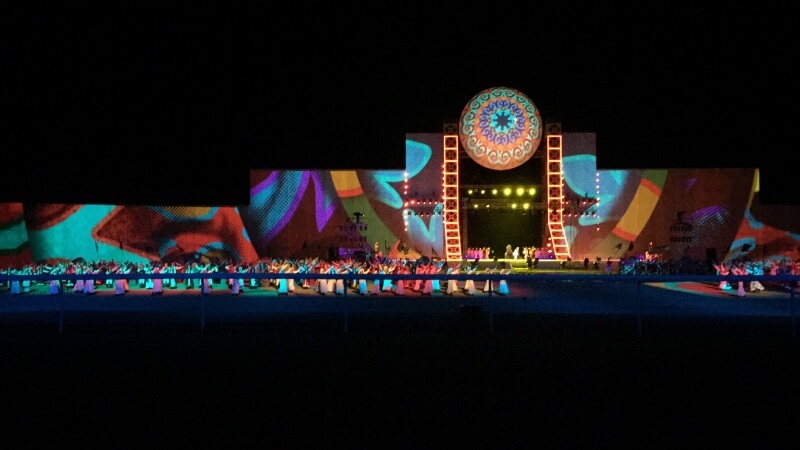
A few Kyrgyzstan facts
- The official Kyrgyzstan language is Kyrgyz, a Turkic language. In Kyrgyzstan Russian is the second language.
- Kyrgyzstan weather is continental: winters are cold and snowy, and summers warm and sunny. The altitude can be treacherous: it might feel like summer in the lowlands, but climb a mountain and you might easily be faced with snow.
- There are nearly 2000 Kyrgyzstan lakes, although most are small and high up in the mountains. The three largest are Issyk-Kul, Son-Kul, and Chatyr-Kul.
- There are Kyrgyzstan horses native to the country: the Kyrgyz, and you’ll see them all over the place.
Eating your way through Kyrgyzstan food
Kyrgyzstan food is heavenly for meat-eaters, and you’ll be well fed wherever you go in Kyrgyzstan. In homes, it won’t take long for food to appear, and chances are it will be on the table even before you arrive. The people of Kyrgyzstan are incredibly hospitable and will make sure you eat! I can’t say I found too many vegetarian options but the food was tasty and plentiful, if somewhat greasy – perfect for the rough climate and nomadic lifestyle.
In the South, shashlik – skewers of beef or mutton – reign. If you leave your car window down, as you head South, you’ll be guided by your nose. Lagman is a classic dish (see below), wheat noodles topped by meat and a few rare vegetables.
Another is plov , or rice pilaf, typical of Central Asia and never made the same way twice. Usually, it’ll be served with onions or garlic or a few bits of carrot. Oily but satisfying.
One thing you’ll find everywhere is kumys, fermented mare’s milk…
The one thing I couldn’t get enough of: bread, which comes in many sizes and shapes.

Safety and attitudes to women
Is Kyrgyzstan safe? Yes!
The joy of traveling to Kyrgyzstan as a woman is that it’s relatively safe wherever you go – while there are no guarantees of safety anywhere, this is not a country in which being a woman should cause you worry.
That said… you’ve heard of bride kidnapping , right? A woman is literally kidnapped and married, willingly or not. Yes – Kyrgyzstan does that. They call it “Ala kachuu”.
Nearly everyone I met had a family member or friend who had been kidnapped. Sometimes, the kidnapping is symbolic, with the woman having been forewarned but often, it is not.
One mother from a rural village was kidnapped in the 1980s and her daughter suffered the same fate (the little boy was the result). The daughter has found happiness in her marriage but it was initially very much against her will – she was finishing her business studies in Bishkek when she was shoved into a car and taken back to her home village to live with a man she had been seeing.
Despite her pleas to her mother, she was locked into a room a few houses away from her parents’ home and her mother, fearing shame, refused to help. They agreed to let me use their photograph but asked that I not reveal their names or location.
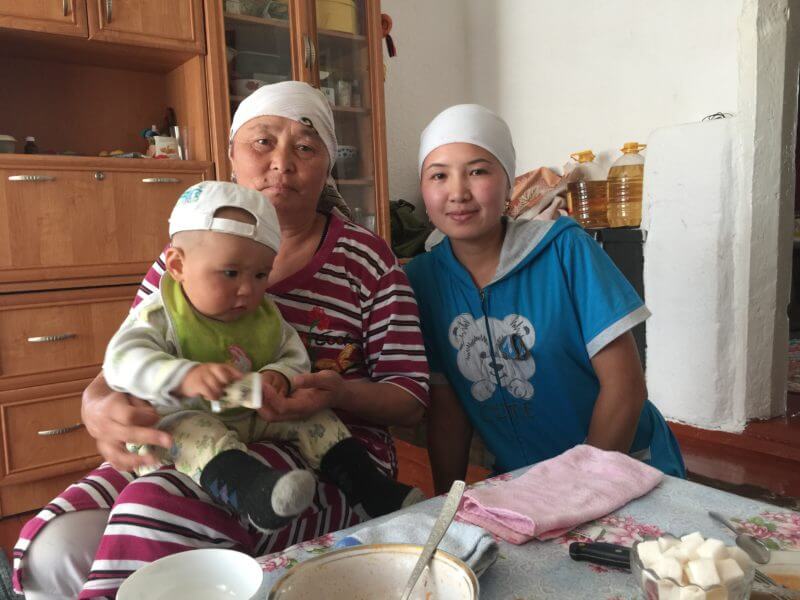
Interestingly, a local sociologist told me kidnapping often occurs when the man lacks the confidence to ask.
A law has now been passed banning bride kidnapping but like everywhere, the mere existence of a law doesn’t erase a custom of culture. Still, at least in urban areas, attitudes are changing and plenty of young women I spoke to told me they’d rather not date and risk being kidnapped – because yes, it’s often the ‘boyfriend’ and by dating, she is seen as tacitly ‘accepting’ his advances.
The chances of this happening to a foreign woman are slim, but it’s important to be aware of social customs and to be on the alert when talking to local men.
The Kyrgyzstan religion is primarily Muslim, so mores are extremely conservative and premarital sex or pregnancy are rare.
So is Kyrgyzstan safe overall?
Other than the high and narrow roads, the one thing that did scare me in Kyrgyzstan: stray dogs at dusk , especially in Bishkek. They roam the streets in packs and converge near bins or garbage dumps as the sun sets and kindly residents put leftovers out for them. They aren’t violent and ignore you but rabies is common in the region, and finding rabies shots could be complicated (especially in rural areas).
Dogs are often culled by different associations but animal rights group are opposing the cull because family-owned dogs are often swept up along with the strays.
I would also be cautious on dark streets at night… that frontier spirit still isn’t too distant.
What to wear and what to buy
Bishkek is like any city: casual wear for tourists and students, more formal for business. If in doubt, err on the conservative side. Even though it was summer, the only bare skin I saw (other than lower arms and legs and the occasional short skirt) was on foreigners.
Once you leave the city, consider you are in a rural area or in the countryside and dress as you would there.
In Karakol, when visiting the Russian Orthodox Church, you’ll have to wear a scarf over your head (bring your own if you don’t want to put on a used scarf).
A the Dungan Mosque, I was promptly handed a chador-type robe (green velvet, no less). The Dungan are a Chinese minority who fled China more than a century ago and have settled in and around Karakol but have retained their Muslim faith.
There isn’t a huge amount to buy in Kyrgyzstan, other than a shyrdyk or traditional carpet but beware, these are heavy!
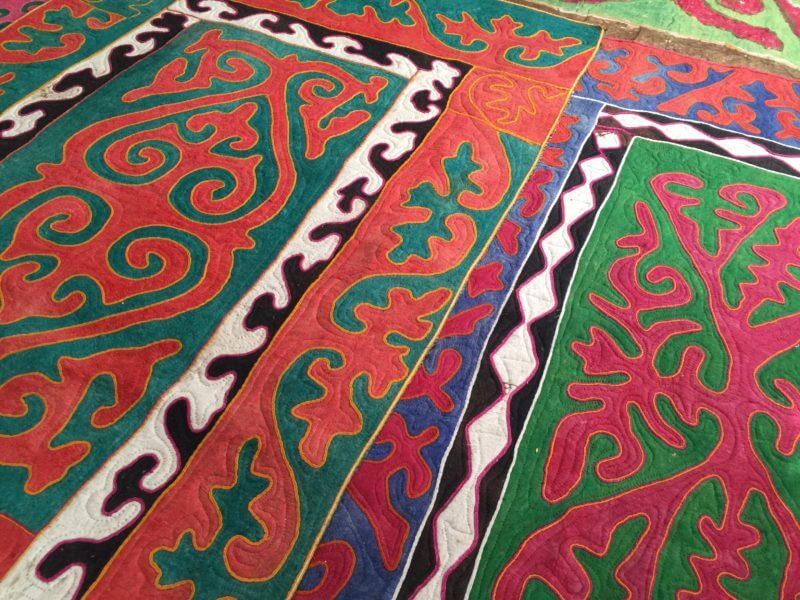
Kyrgyzstan’s position at the crossroads of Central Asia makes the country a ‘cauldron of diversity’, as I’ve heard it called so appropriately. Most times, that diversity mixes well, in spite of the occasional ethnic clashes. Society is in full transition, torn between the former safety of the Soviet net and the possibilities of the future.
A Muslim country, Kyrgyzstan has so far avoided extreme fundamentalism but there are concerns, among government and parents, that young people lacking opportunities at home (many migrate for jobs) may turn to extremism for solace.
Perhaps what struck me the most was the solitary silence I was able to experience, so rare in most parts of the world. As I moved further off the beaten track, there were hours during which all I saw were herds of horses, and the occasional, distant yurt.
At night, no urban light spoiled the huge sky and if you turned on your phone, all you’d get is the dreaded ‘No Service’. Except here, no service is just the way it should be.
A final note about Kyrgyzstan
For someone who dislikes heights and is averse to mountains, travel to Kyrgyzstan for three weeks might seem an odd choice. But as I planned my trip to Kyrgyzstan, I was mesmerized by this country, and something about its strong nomadic links called to me (my own ancestors were from this part of the world).
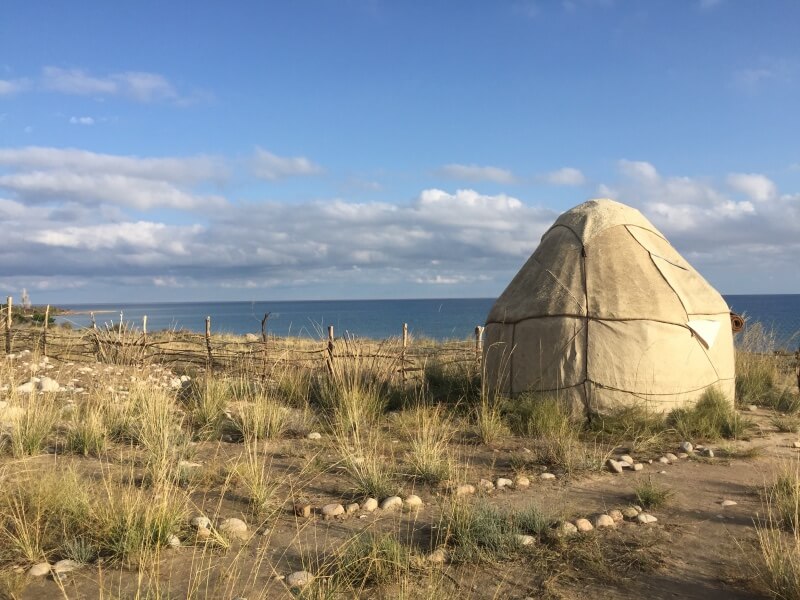
So I conveniently ‘forgot’ about the dizzying 7000m+ Kyrgyzstan mountains and the scarily narrow dirt roads, somehow imagining everything would somehow be… lower. Or that perhaps I might not notice.
I was so, so wrong.
Despite my vertigo, I somehow always end up on mountains – Moroccan Atlas , Albanian Alps , Philippines Cordillera… Kyrgyzstan is on a par, with thin ribbons of red clay road that cut into mountain faces, threatening to propel a car into the abyss at first rain.
The good news is – I’ll probably never be this afraid again.
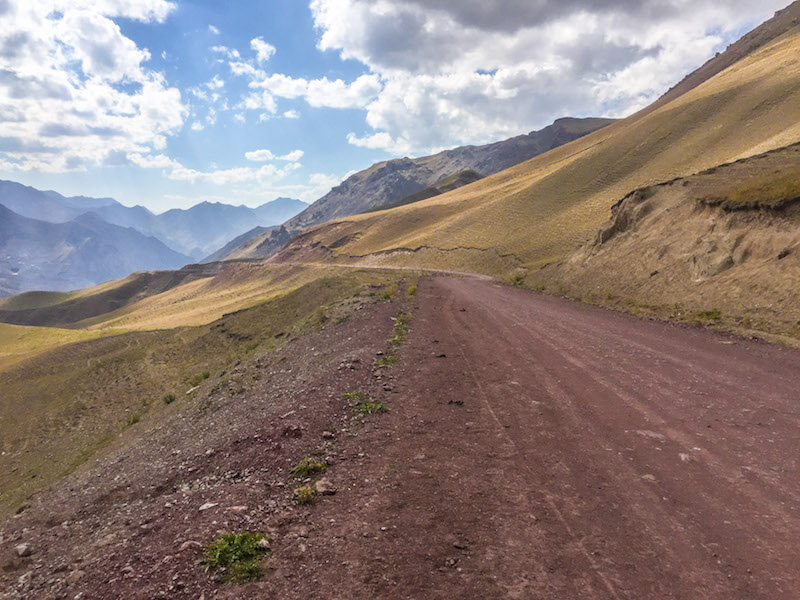
Kyrgyzstan travel resources
- Try to book a room for your first night or two in Bishkek (I always reserve my first few nights, just to get my bearings). You will find some cheap hotels in Kyrgyzstan, but part of the joy in this country is staying in yurts.
- I used the excellent Bradt Guide to Kyrgyzstan to plan my travels.
- Caravanistan is a great online resource for travel in Kyrgyzstan and for all of Central Asia.
- If you choose to get help to plan your travels (I recommend this), then contact CBT and make your visit as free or as organized as you choose.
NOTE: The above section called “10 experiential adventures” was developed in partnership with World Expeditions and their #WEVentureOut campaign.
And please – don’t forget your travel insurance before you go! I recommend SafetyWing if you’re 69 and under. If that birthday has come and gone, click here for travel insurance that covers you at any age.

If you liked this post, please share it!
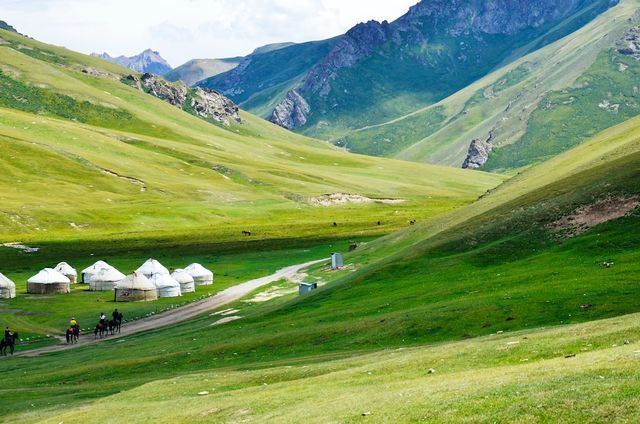
Solo Female Travel in Kyrgyzstan
Travel rating.
Based on 5 experiences
Based on our research
Based on safety reports
Meet new people
Get the travel ladies app to meet new people , find travel buddies , share solo travel experiences and stay with locals through couch surfing ..

Is Kyrgyzstan good for solo travel?
Safety: Safe
Transport: Moderate
Things to do: Interesting

Food: Above average
Budget: Affordable
Is kyrgyzstan worth visiting, overall rating.
based on 5 experiences
Things to do
Budget-friendly, solo travel experience.
I recently travelled solo to Bishkek, Kyrgyzstan. It was my first stop in Central Asia, and I went to Ala Archa National Park and the National Museum. Overall, it was an experience being able to see ex-Soviet buildings, in a Russian speaking country and one of the best views from the plane flying into the country
Group travel experience
A year ago, I went to Kyrgyzstan as part of a 5-Stans expedition and it was my favorite country out of all the Stans. Beautiful landscapes, wonderful people, and plenty of meat on large skewers. I can't wait to go back there and spend more time.
Kyrgyzstan is a true paradise. It is there that I saw the most incredible places in my life, even though I have seen many. Wild mountains, untouched by tourism, unimaginable spaces - I can't wait to go back there again. Transportation is quite expensive, as it is hard to get to the vehicles used by the locals. Prices for food and accommodation are typical. Camping costs depend on the location, as we slept in a yurt and at higher altitudes, our water bottles would freeze. For me, the valley and wetlands near Kol Su were the most amazing places during this trip.
I visited Kyrgyzstan alone and did a small hike in the Ala Archa National Park and a walking tour around Bishkek (I loved the Osh market). I would also like to see Issyk Kul, unfortunately, I didn't have enough time. People in Kyrgyzstan seemed to be much friendlier than in the surrounding countries. I loved my stay in Kyrgyzstan and I will definitely return there someday.
I went to Kyrgyzstan and I really liked it there. The people were very friendly, especially outside cities. Staying in homes through community-based tourism was pleasant and quite cheap. Regional airlines are the best way to get around the country or hop to another one, as they are fast and very reasonably priced. Driving longer distances can take forever due to poor road infrastructure and mountainous terrain.
Can host for:

hi my name is Nellie I'm traveling with a child I need to find a place for the first time until we find an apartment. if there is an opportunity to help, I will be very glad we are going to San Diego from January 1
Explore Kyrgyzstan
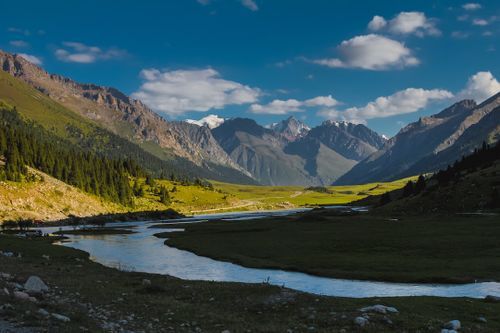
Cholpon Ata

- Privacy Policy
- Work With Us (Social Media Manager)
- Solo Travel
- Couch surfing
- Travel Buddy
- Meet New People
- Travel Safety Index
- Crime Index
- Best countries for solo female travel
- Safest countries for solo female travel
- Cheap countries for solo female travel
- Best places for solo female travel
- Safest places for solo female travel
- Cheap places for solo female travel

52 Tips for Travelling in Kyrgyzstan (Backpacker’s Guide)
April 1, 2020.
Everything you need to know about travelling in Kyrgyzstan. Where to visit, how to get around, safety and more are covered in this comprehensive travel guide.
Thinking of a trip to Central Asia? You can’t miss Kyrgyzstan – it’s one of the most beautiful countries in the world, and it’s still undiscovered by most travellers.
I’ve spent over three months backpacking around Kyrgyzstan, and have fallen in love with its snowy mountains, nomadic culture, blue lakes, and friendly locals.
In this post, I’ll go over everything you need to know about travelling in Kyrgyzstan based on my experience.
After reading this guide, you’ll be ready to head out and experience Kyrgyzstan for yourself.
- 1 Backpacking Kyrgyzstan
- 2 Visas For Travelling To Kyrgyzstan
- 3 Safety in Kyrgyzstan
- 4 Travel Insurance for Kyrgyzstan
- 5 Money in Kyrgyzstan
- 6 Communication in Kyrgyzstan
- 7 Getting to Kyrgyzstan
- 8 People & Culture of Kyrgyzstan
- 9.1 Northern Kyrgyzstan
- 9.2 Issyk-Kul Region
- 9.3 Central Kyrgyzstan
- 9.4 Southern Kyrgyzstan
- 10 Getting Around Kyrgyzstan
- 11 Accommodation in Kyrgyzstan
- 12 Best Time to Visit Kyrgyzstan
- 13 Internet & SIM Cards in Kyrgyzstan
- 14 Solo Travel in Kyrgyzstan
- 15 Budget for Backpacking Kyrgyzstan
- 16 Kyrgyzstan Backpacking Guide Wrap-up
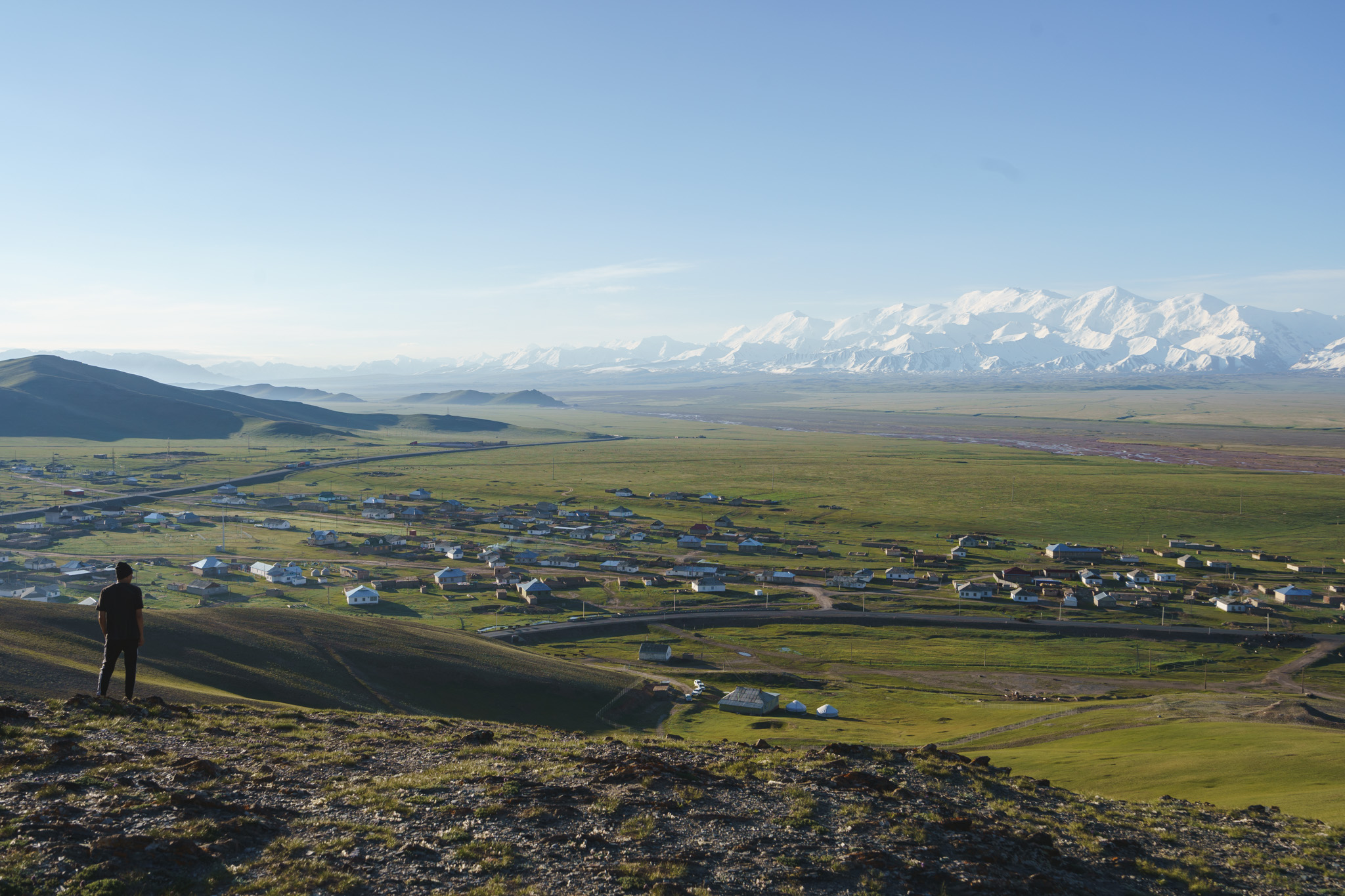
Backpacking Kyrgyzstan
Kyrgyzstan is the best Central Asian country for backpackers, in my opinion. It’s beautiful, cheap, and has a ton of stuff to see and do. If you like mountains, hiking, history, and unique culture, then Kyrgyzstan is the destination for you.
Kyrgyzstan is still a bit off the radar to most backpackers (much like Central Asia as a whole), but trust me, this is quite possibly the most incredible travel region in the world. You’ll fall in love with Central Asia, and will definitely want to get back soon.
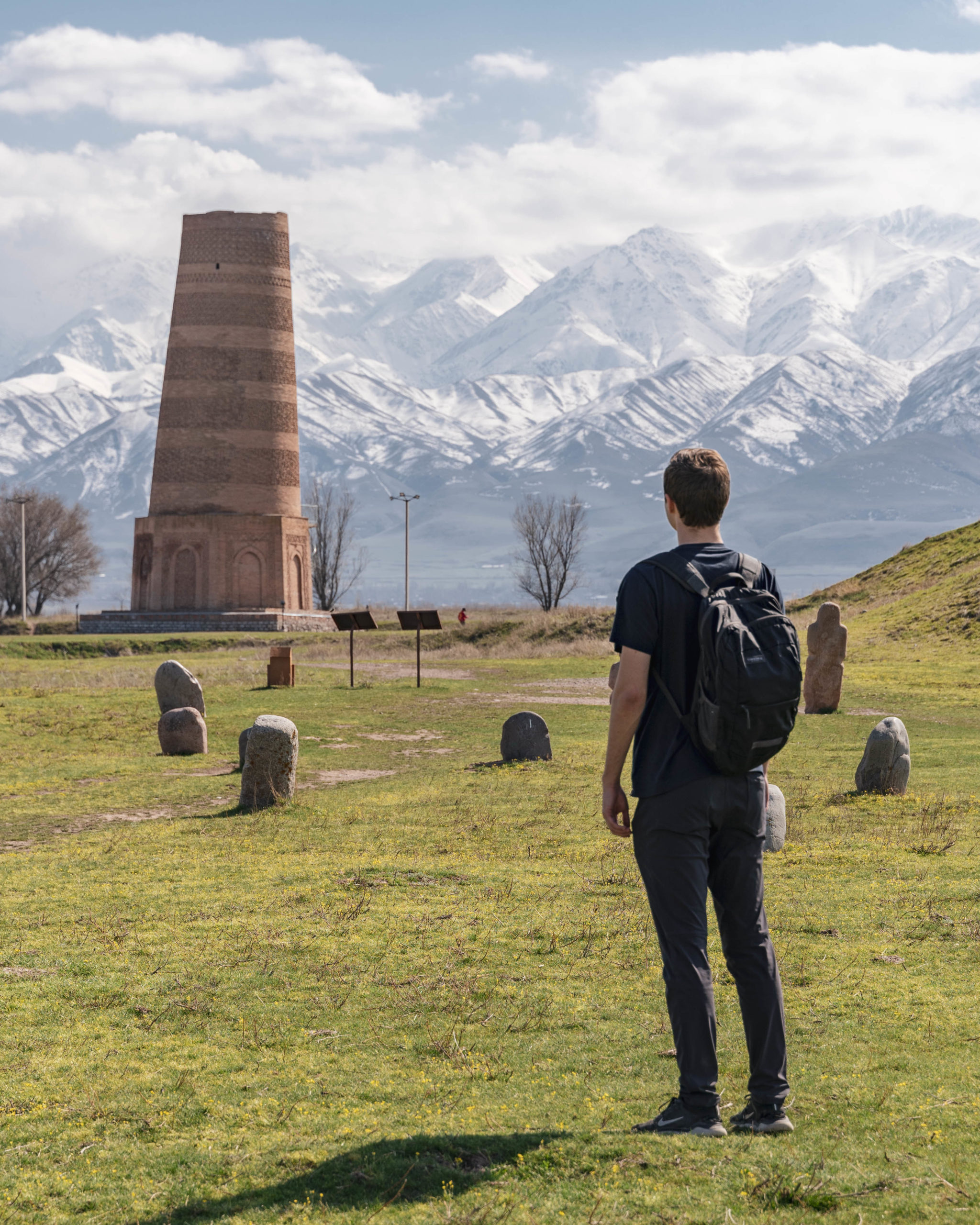
Visas For Travelling To Kyrgyzstan
1 – You likely don’t need a visa to visit Kyrgyzstan: Kyrgyzstan has the most liberal visa policy in all of Central Asia, making it a great place for first-timers to the region. Citizens of most developed countries are able to visit Kyrgyzstan visa-free for stays of up to 60-days.
For those not eligible for visa-free entry, you can easily apply for an e-visa.
To check visa eligibility, check out the official government e-visa site .
Safety in Kyrgyzstan
2 – Is it safe to travel to Kyrgyzstan? Kyrgyzstan is a perfectly safe travel destination, despite the fact that the countries name ends in ‘stan. I’ve never been shown anything but friendliness by the locals.
Of course, you should still exercise normal precautions when visiting Kyrgyzstan. Don’t walk down dark streets, watch your pockets in crowded areas, avoid talking about religion, and just be respectful to people.
Travel Insurance for Kyrgyzstan
3 – Travel Insurance for Kyrgyzstan: No matter where you go, you should always have travel insurance – Kyrgyzstan is no exception. Even though Kyrgyzstan is quite safe, accidents can still happen.
I personally use and recommend World Nomads. It’s designed for adventurous travellers with cover for overseas medical, evacuation, baggage and a range of adventure sports and activities (important if you plan on doing any hiking while in Kyrgyzstan!).
GET YOUR FREE QUOTE FROM WORLD NOMADS HERE
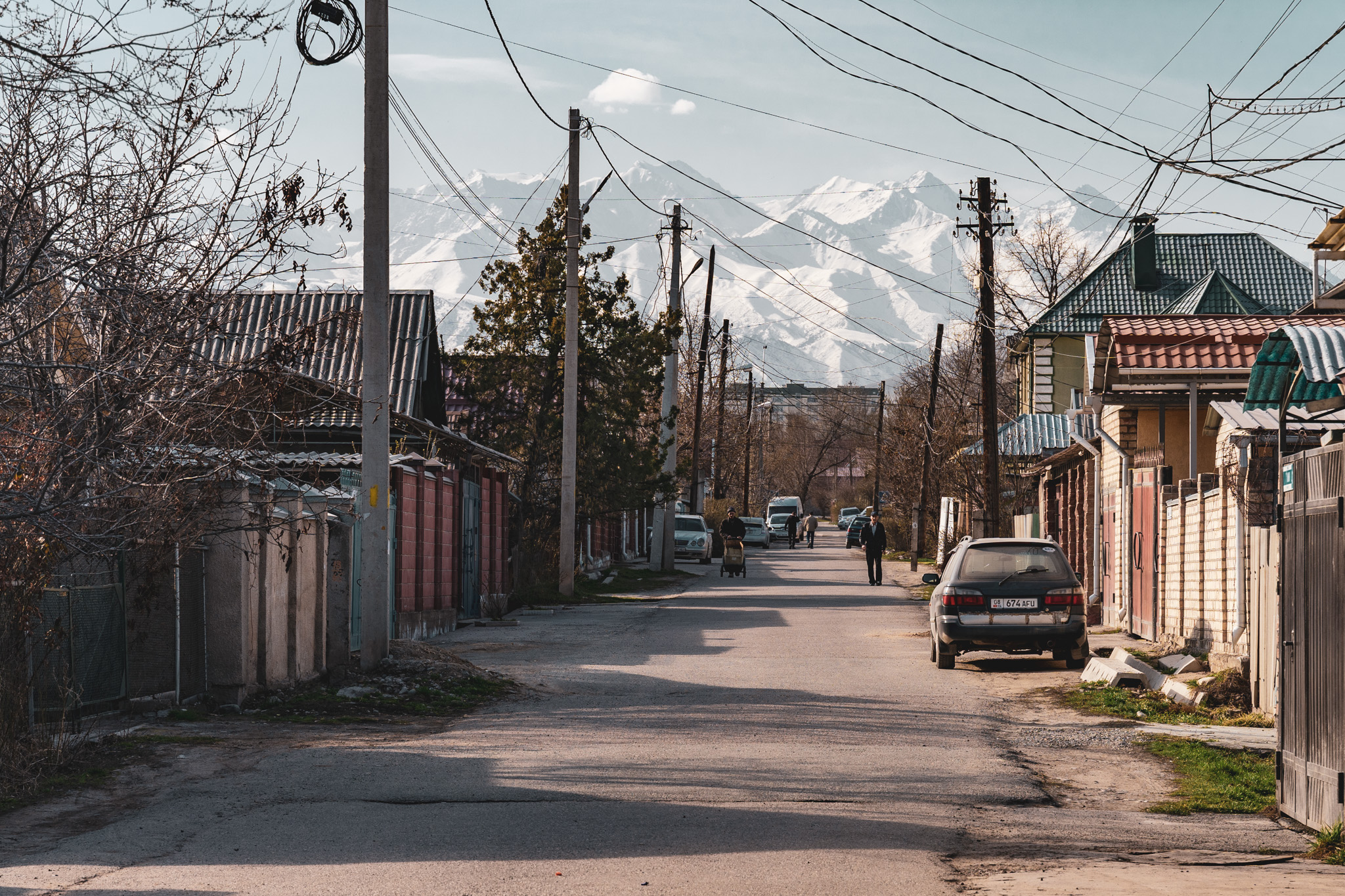
Money in Kyrgyzstan
4 – The Kyrgyz Som is the official currency of Kyrgyzstan: Kyrgyzstan’s official currency is the som or KGS. The current exchange rate is $1 = 70 som as of March 2020. Check XE.com for the latest rates.
5 – ATM machines can be found in major towns: As a tourist, you’ll typically need to use cash unless you’re at a higher-end supermarket, hotel, or cafe that accepts credit cards.
Banks and ATMs (Bankomat in Russian) are common in Kyrgyzstan, and the ATMs from most large banks accept foreign cards (both VISA and MasterCard), so you can simply withdraw cash after you’ve arrived in Kyrgyzstan.
I’ve successfully withdrawn cash from ATMs including Demir Bank, Kazkommerzbank, and KICB. You will be able to find ATMs in the following cities: Bishkek, Osh, Naryn, Cholpon Ata, Kochkor, Jalal-Abad, and Karakol.
Some ATM machines can even dispense USD instead of KGS if you happen to need it.
6 – You can also convert USD to KGS: If for whatever reason you don’t want to use a Kyrgyz ATM, you can bring USD and convert it to som when you arrive in Kyrgyzstan. However, be careful if you’re travelling with large amounts of cash! Other major currencies are also exchangeable in Kyrgyzstan. Try to bring crisp bills.
I’ve found exchange rates to be very fair in Central Asia, but always double-check to make sure that they’re giving you a good rate.
Planning to visit Uzbekistan as well? Be sure to check out my 2-week Uzbekistan itinerary to help plan your trip!
Communication in Kyrgyzstan
7 – Russian and Kyrgyz are the most prominent languages in Kyrgyzstan: Due to Kyrgyzstan’s history as part of the Soviet Union, Russian is spoken throughout the country.
Russian is used as an inter-ethnic common tongue in Kyrgyzstan (and other former Soviet Central Asian countries). In Bishkek, you’ll hear Russian as the most common language.
Kyrgyz is a Turkic language and is spoken by almost all Kyrgyz people (some Bishkek-born Kyrgyz have never learned it).
8 – Kyrgyzstan has a few minority languages: While Russian and Kyrgyz are by far the most common, there are a few other languages spoken in certain parts of Kyrgyzstan.
In Southern Kyrgyzstan, there are a number of ethnic Uzbek people who speak Uzbek, which is another Turkic language.
Other minority languages include Uyghur and Dungan.
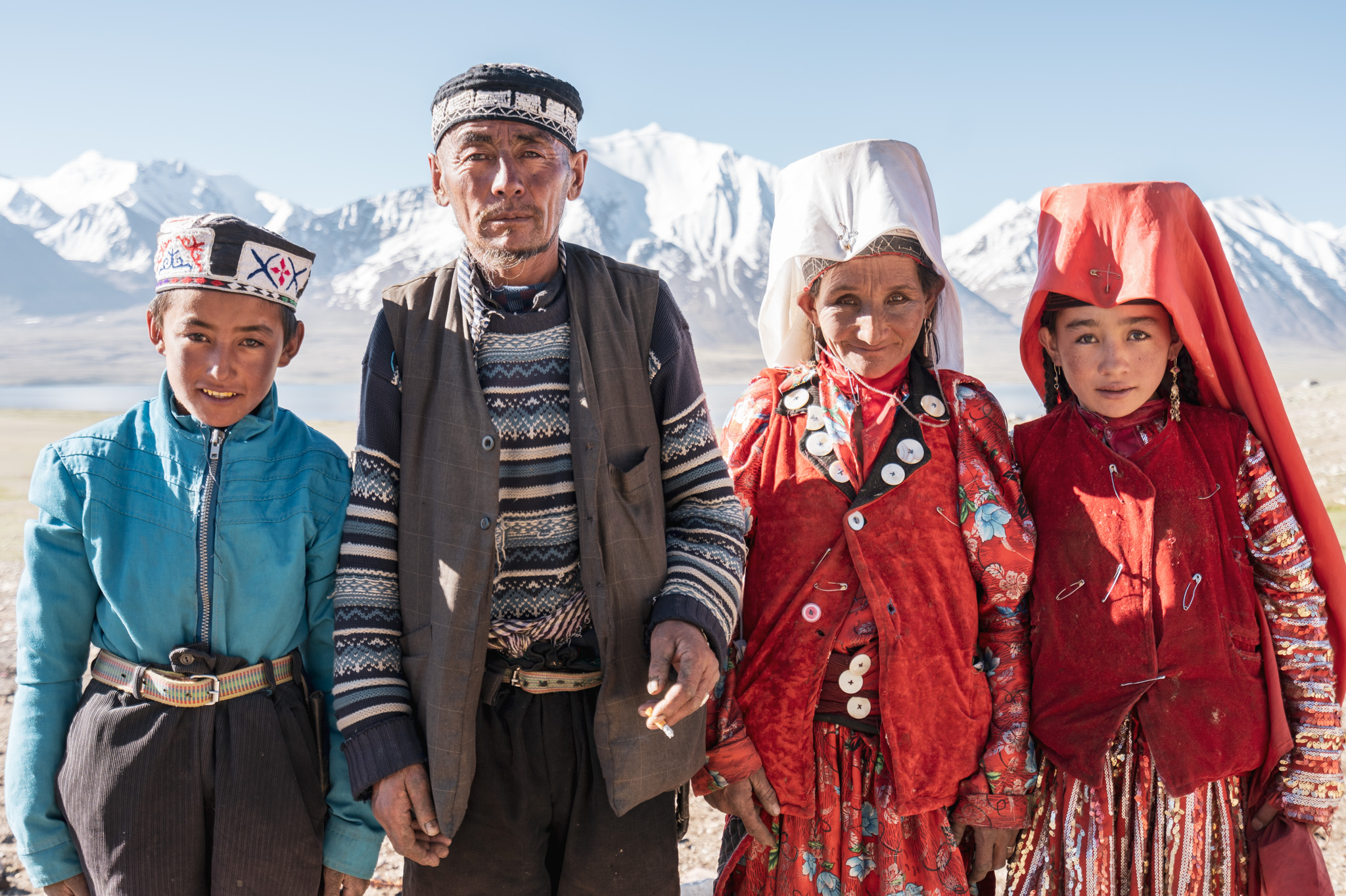
9 – Do you need to know Russian to visit Kyrgyzstan?: No, you don’t need to know Russian (or Kyrgyz) to travel around Kyrgystan. While knowing the local language of a country can provide much deeper experiences, it’s never 100% necessary.
You should try to learn the basics, though. Purchase a Russian phrasebook and you’ll be set. Google Translate is another lifesaver, especially with its offline option in case you don’t have internet access.
Plenty of people in Bishkek speak English, especially young university students. I found that people were always eager to practice their English with me! Also, most people working in the tourism industry (tour guides, hostel owners, etc) speak great English.
When all else fails, awkward hand gestures are usually able to save the day.
10 – Learn a few words in Kyrgyz to impress the locals!: It’s not very common for foreigners to know any Kyrgyz, so if you can learn a few basic words in Kyrgyz, you’ll make someone’s day. Easy ones are “ rakhmat ” (thank you) and “a s-salaam-alaikum ” (hello).
Getting to Kyrgyzstan
11 – Overlanding into Kyrgyzstan is possible: Kyrgyzstan shares land borders with China, Kazakhstan, Uzbekistan, and Tajikistan. There are land borders between all of those countries, and they are open to foreigners.
Popular crossings that travellers use are the Irkeshtam Pass between Kashgar and Osh, the Kyzylart Pass between Sary-Tash and Murghab on the Pamir Highway , the Kordai crossing between Bishkek and Almaty, the Dostyk crossing between Osh and Andijan, and the Batken/Isfara crossing from Osh to Khujand .
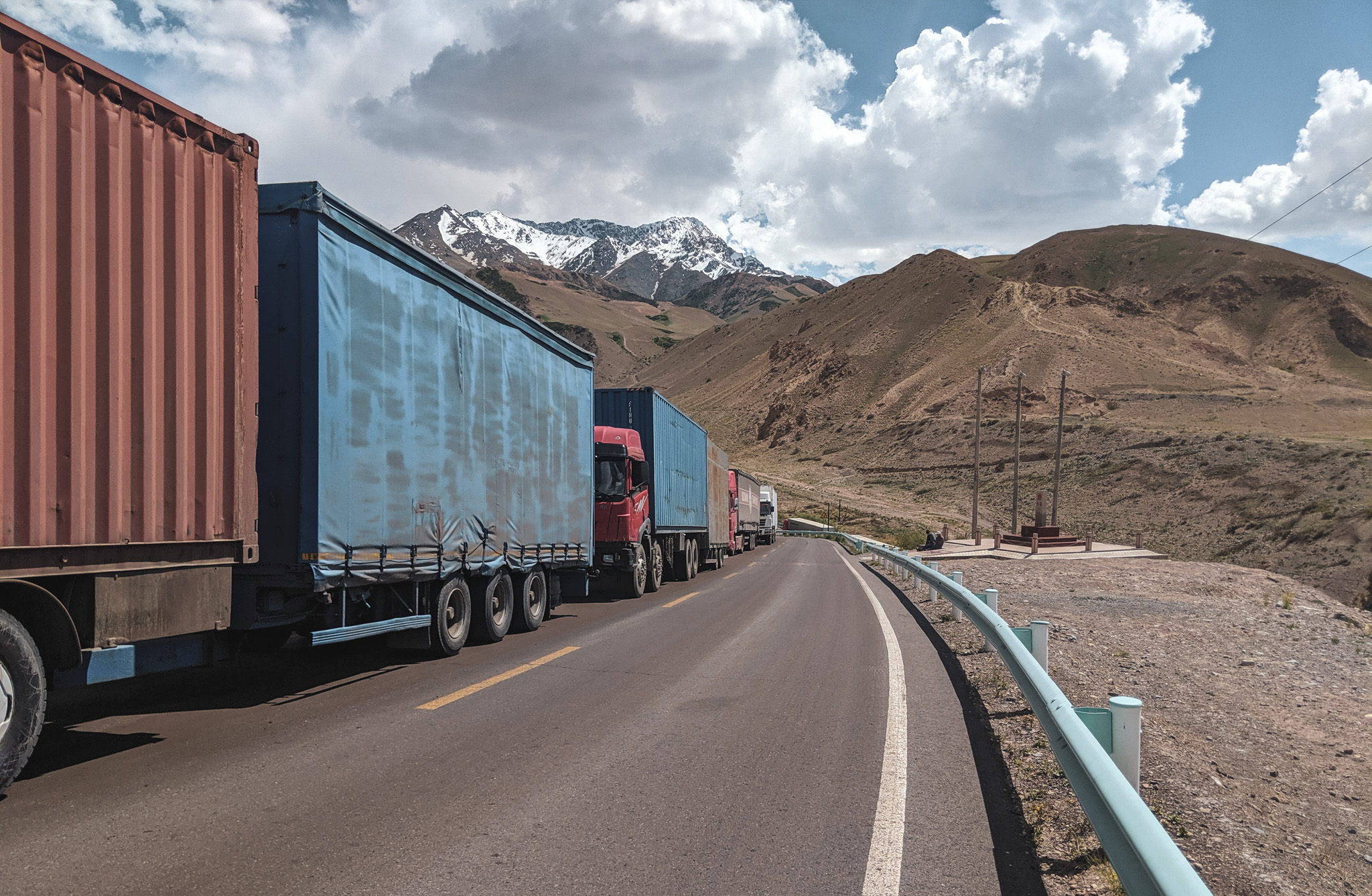
12 – Flying to Kyrgyzstan can be a bit expensive: Kyrgyzstan isn’t the most well-connected by air, so flying to it (especially from North America) can be pricey.
When searching for flights, consider flying into Almaty or Tashkent if it is too expensive to fly into Bishkek.
Bishkek has direct international flights from Istanbul, Moscow, Dubai, Nur-Sultan, Tashkent, Dushanbe, Urumqi, and a number of other cities in Russia.
I recommend using Google Flights to find the cheapest flights to Kyrgyzstan.
13 – Kyrgyzstan’s flag carrier is Air Kyrgyzstan: Unfortunately, Air Kyrgyzstan doesn’t have many routes and is only really useful for people travelling to or from Russia. It also happens to be on the list of airlines banned in the EU .
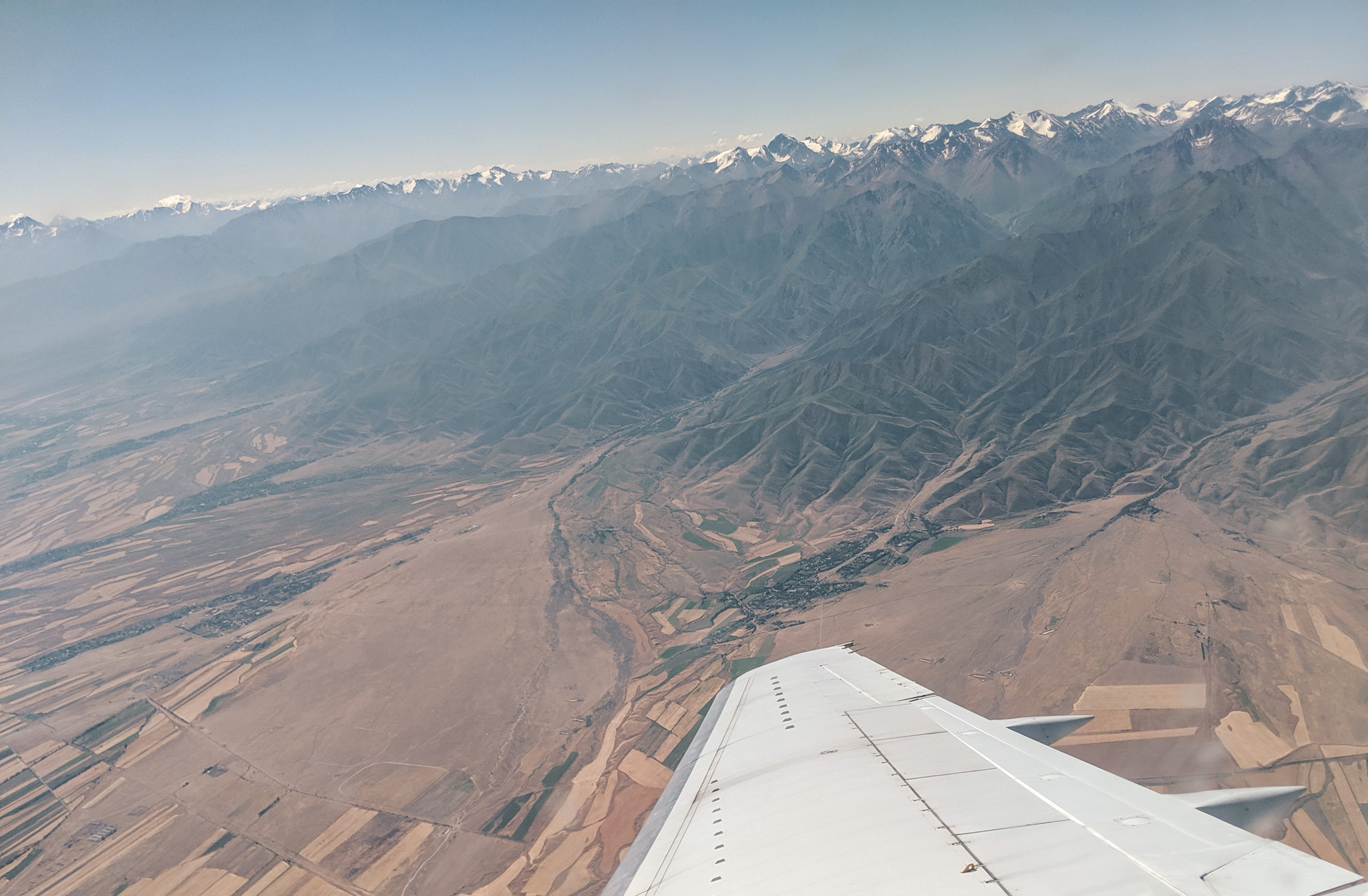
People & Culture of Kyrgyzstan
14 – Kyrgyzstan is a majority Muslim country: 88% of Kyrgyzstan’s population is Muslim, with 85% of them being Sunni Muslims. Most of the remainder of the population is Christian (usually the Russians).
While many people are Muslim, they’re not nearly as religious as in places such as Pakistan or Saudi Arabia . Due to the long Soviet rule over Kyrgyzstan, many religious practices were wiped out and are only just now starting to gain any sort of traction again.
Most Kyrgyz people drink alcohol, and in the northern part of the country, hijabs are not very popular.
15 – Southern Kyrgyzstan is more religious than the north: The Ferghana Valley region of Kyrgyzstan (around the city of Osh) is the most religious part of the country. People here follow their religion much more closely than those in Bishkek, so you should be careful to dress appropriately when travelling in this part of the country.
16 – Kyrgyz people are proud of their traditions: Alongside their religious traditions, Kyrgyz people have plenty of other cultural traditions.
Kyrgyz society is very family-oriented, and events such as childbirth and weddings end up resulting in large celebrations. In the countryside, you’ll still see plenty of traditional Kyrgyz clothes and people living nomadic lives in yurts.
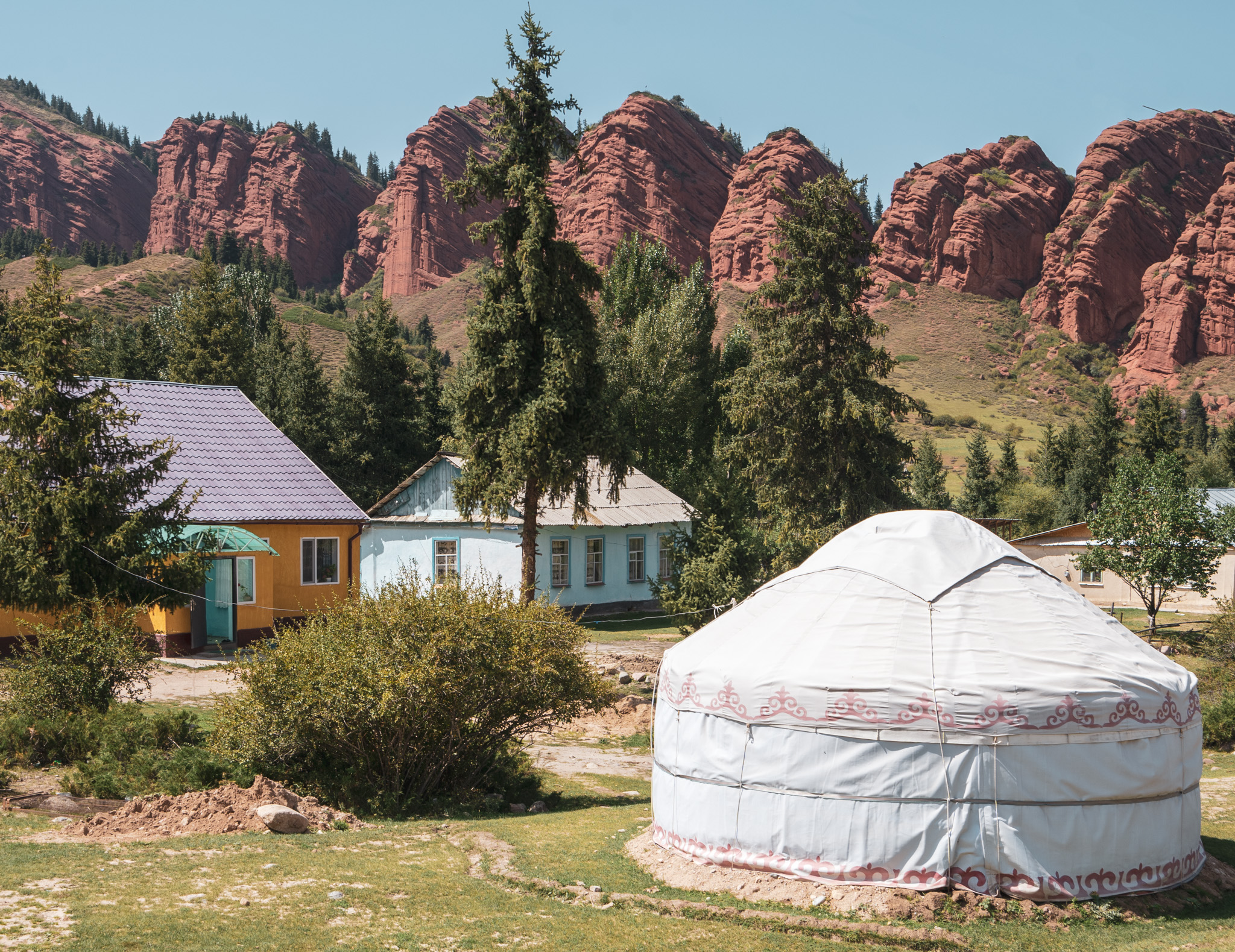
Where to visit in Kyrgyzstan
17 – You could spend months in Kyrgyzstan: While it looks tiny on a map, Kyrgyzstan has an endless amount of things to do. There are countless 5+ day treks to go on, plenty of 6,000-meter peaks to climb, and hundreds of little villages to discover.
Trust me, I’ve spent months in Kyrgyzstan and still feel as though I haven’t even scratched the surface of what this country has to offer.
Northern Kyrgyzstan
18 – Bishkek is Kyrgyzstan’s cool capital: While some people consider Bishkek to be a bit of a boring city, I really like it! The city has an interesting Russian-Kyrgyz vibe and is full of awesome little cafes, bars, and restaurants. It makes for a great place to spend some relaxation time after roughing it in the mountains.
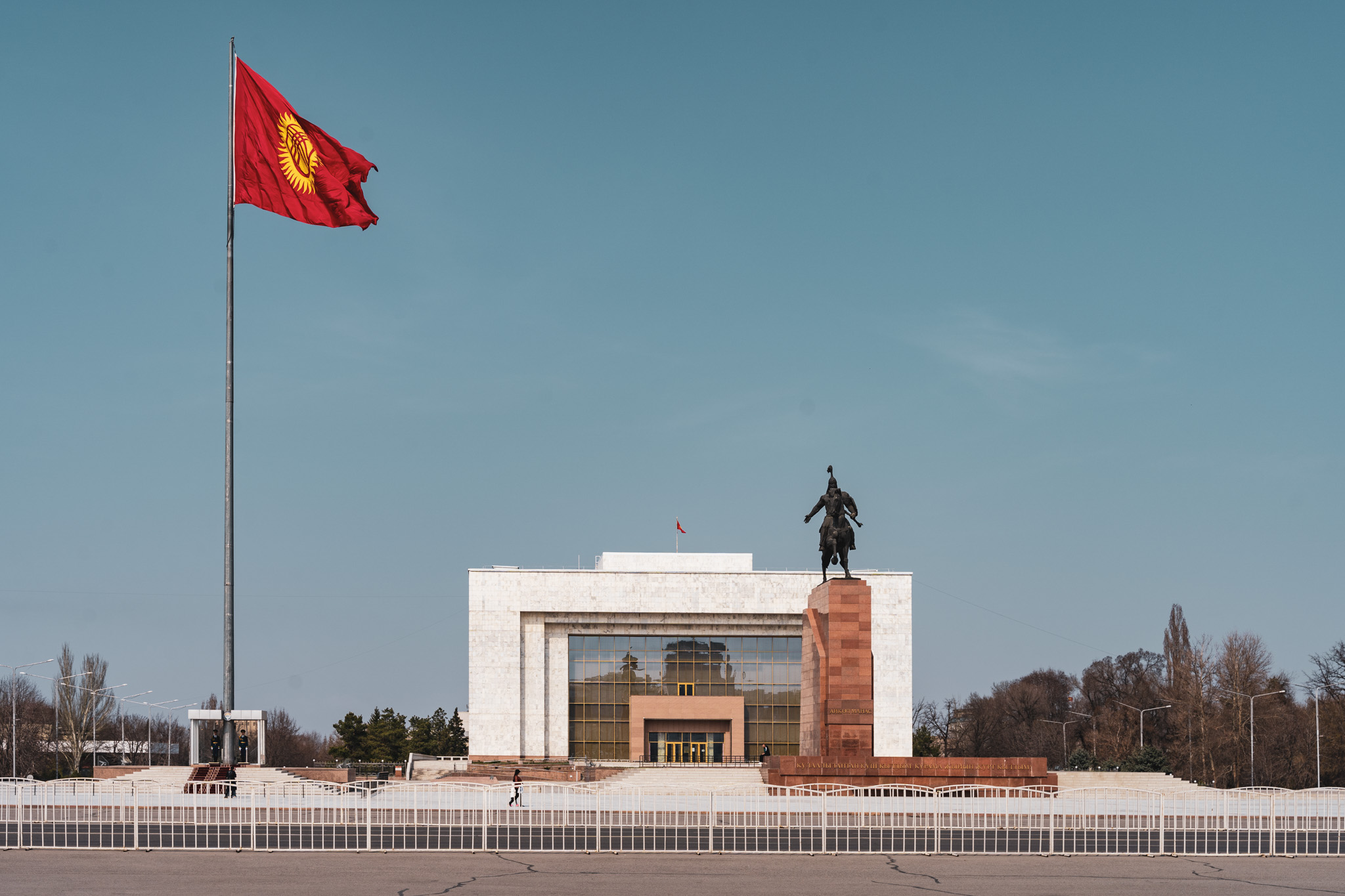
19 – Ala Archa National Park – mountains right next to the city!: Another thing I like about Bishkek is it’s proximity to the mountains. Ala Archa National Park is located only an hour south of the city and is perfect for day or weekend trips. It’s got mountains nearly 5,000 meters tall and plenty of hiking trails.
20 – Burana Tower is one of Kyrgyzstan’s best historical sights: Burana Tower is an ancient Silk Road era minaret located only an hour and a half east of Bishkek. It’s easy to visit it using public transport as a day trip from Bishkek.
Check out my guide to visiting Burana Tower for more info!

Issyk-Kul Region
21 – Karakol is a paradise for hikers: Karakol is a medium-sized city located near the eastern end of Issy-Kul, and just south town are the massive peaks of the Tien Shan mountains. Karakol is the perfect place to base yourself and go hiking in the mountains. There are quite a few different trekking options around here – you could do a 2/3-day Ala Kul hike or even the longer 5-day Ak-Suu trek.
For more info on hiking options near Karakol, see the official Destination Karakol site.
22 – Like beaches? Head to the Issy-Kul!: After wrapping up a challenging hike, why not head to the beach? Issy-Kul has a number of different beach towns surrounding it. Cholpon-Ata is where Kyrgyz and Russians go for beach parties, whereas Tosor is a nice quiet place for a relaxing beach experience.
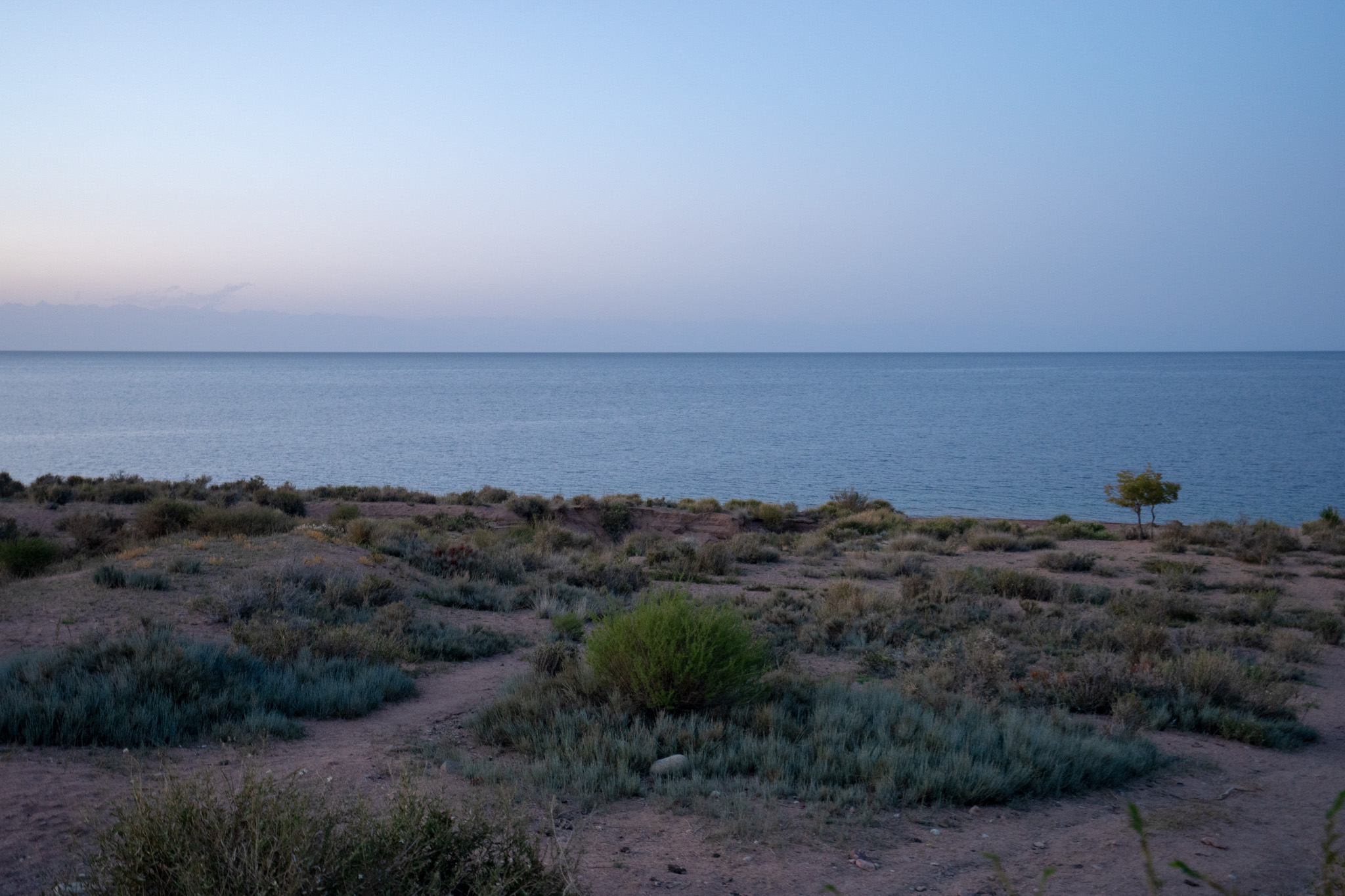
23 – Jyrgalan is a great off-the-beaten-path hiking destination: If you’re up for even more hiking, consider Jyrgalan. This small town near the Kazakh border is Kyrgyzstan’s fastest growing hiking destination – so check it out before everyone else does! See their official site for more info.
Central Kyrgyzstan
24 – Nomadic traditions are strong here: Central Kyrgyzstan is the land of mountains and yurts. It’s very sparsely populated and is a great place to get off-the-beaten-path. In these highlands, many Kyrgyz people still live traditional nomadic lives living in yurt camps and surviving off of the land.
25 – Song Kul is the most popular destination: Song Kul is a beautiful alpine lake surrounded by green pastures. Song Kul is surrounded by a number of different yurt camps where tourists can stay, and the area around the lake is wonderful for hiking and horseback riding.
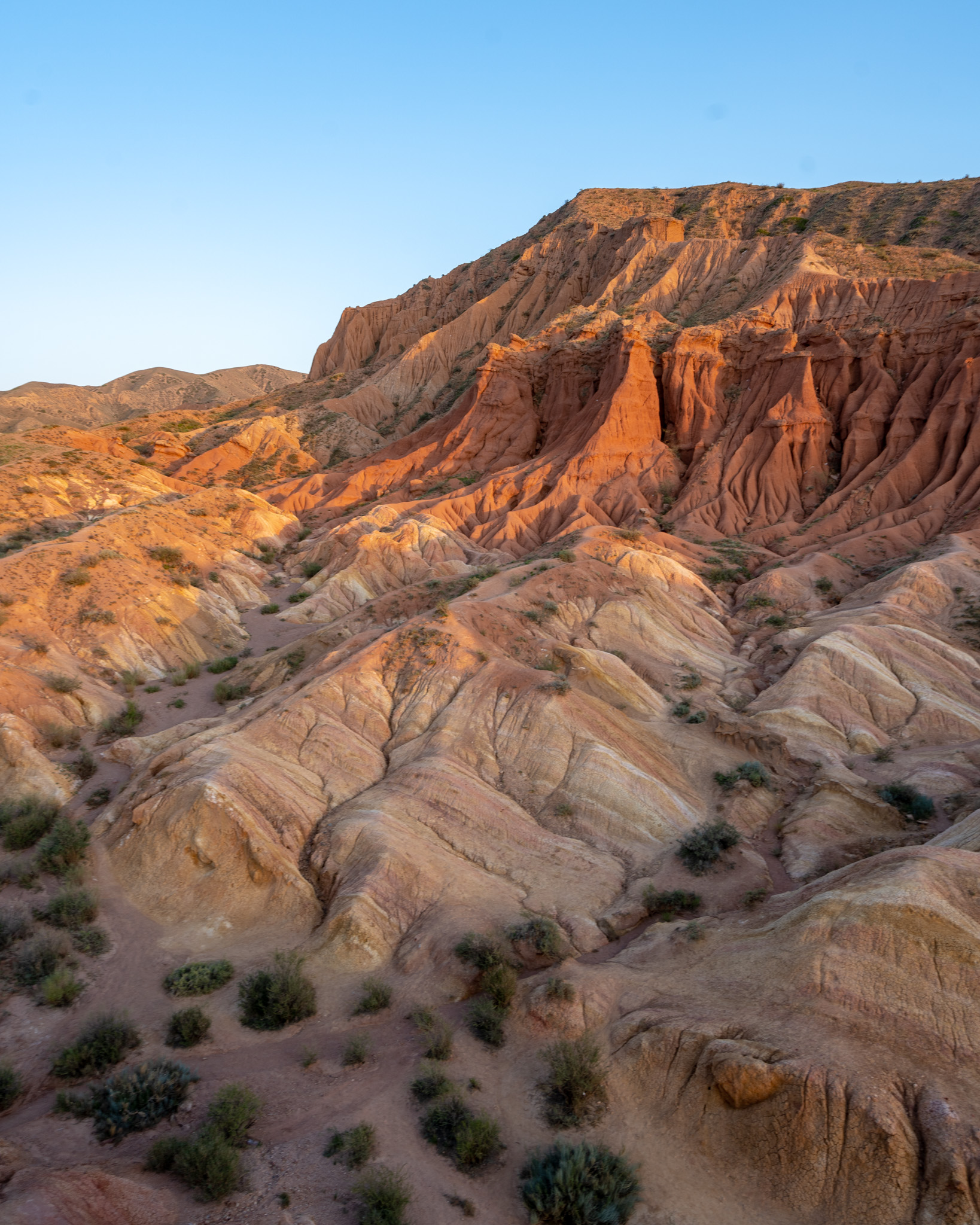
26 – Endless hiking opportunities: There are plenty of places to go hiking in Central Kyrgyzstan, from the beautiful Kol-Suu lake to the mountains near Toktogul. If you want to get away from everybody else, this is your place.
Southern Kyrgyzstan
27 – Osh is Kyrgyzstan’s southern capital: Osh is the second-largest city in Kyrgyzstan and a place you’ll definitely pass through if you want to explore the south of the country. It’s a nice place to eat some decent food, although it can get extremely hot in the summertime.
28 – Visit the walnut forests of Arslanbob: One of the most popular destinations in Southern Kyrgyzstan is the town of Arslanbob. It’s located just a few hours away from Osh, and is easily reached by public transport. Spending a few days here and relaxing in the walnut forests should be on everyone’s Kyrgyzstan itinerary.
Community-based tourism in Arslanbob is a fantastic way to stay in a homestay and experience local life, and I recommend looking into it if you’re planning on visiting!
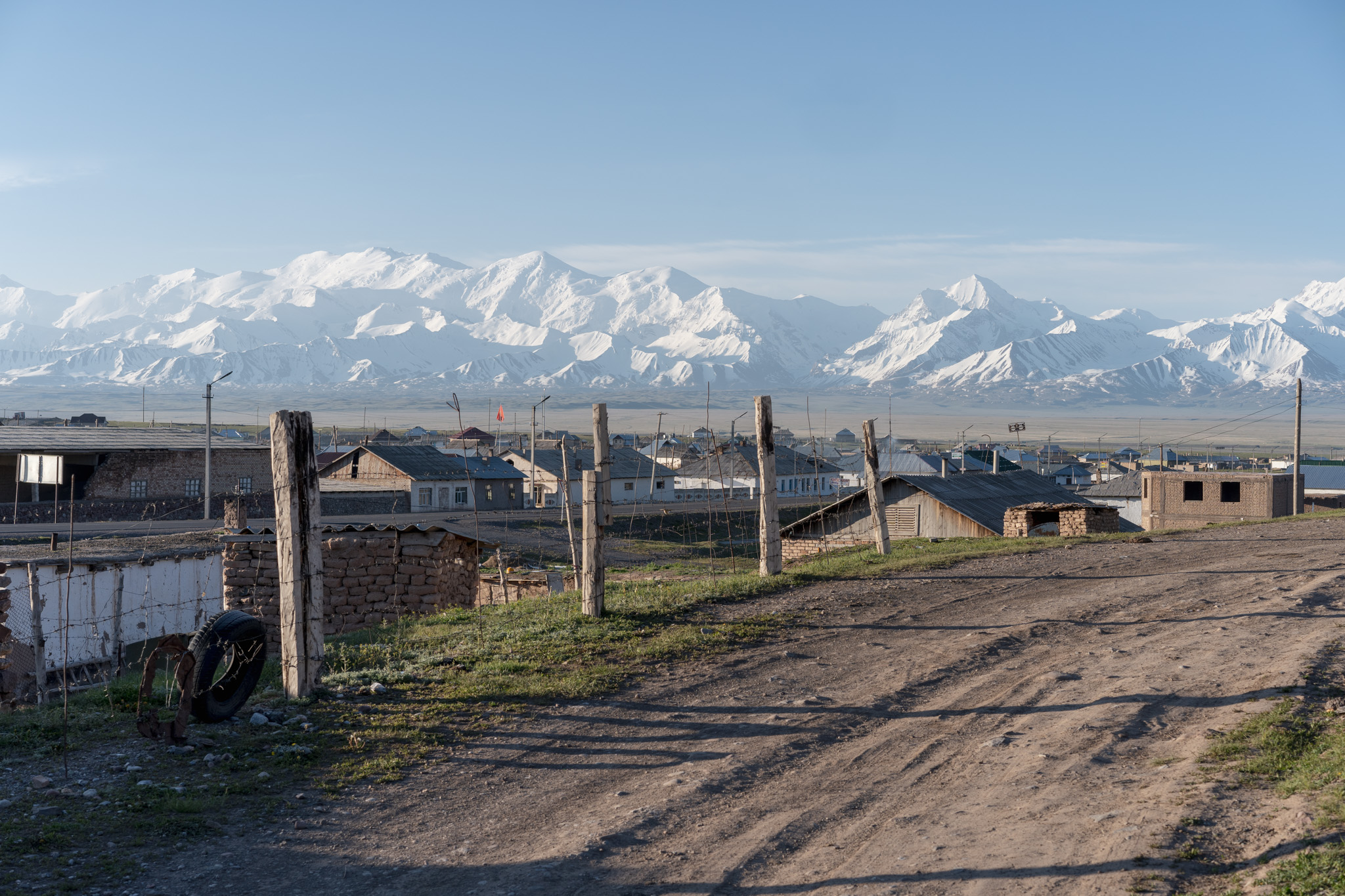
29 – The Alay Valley is incredibly beautiful: The Alay Valley is my favourite place in Kyrgyzstan – it’s a wide valley full of green grass surrounded by massive 7,000-meter peaks. I’ve never seen anything quite like it. Consider spending a couple of days in the towns of Sary-Tash or Sary-Mogul to take in the views here.
30 – If you’re into mountaineering, consider climbing Lenin Peak: Kyrgyzstan is a paradise for mountaineers, and one of it’s most popular climbs is the 7,134 meter Lenin Peak. It’s not an easy climb, but for climbers looking to get into high-altitude mountaineering, it is an accessible and affordable option.
Check out my guide to learn more about climbing Lenin Peak .
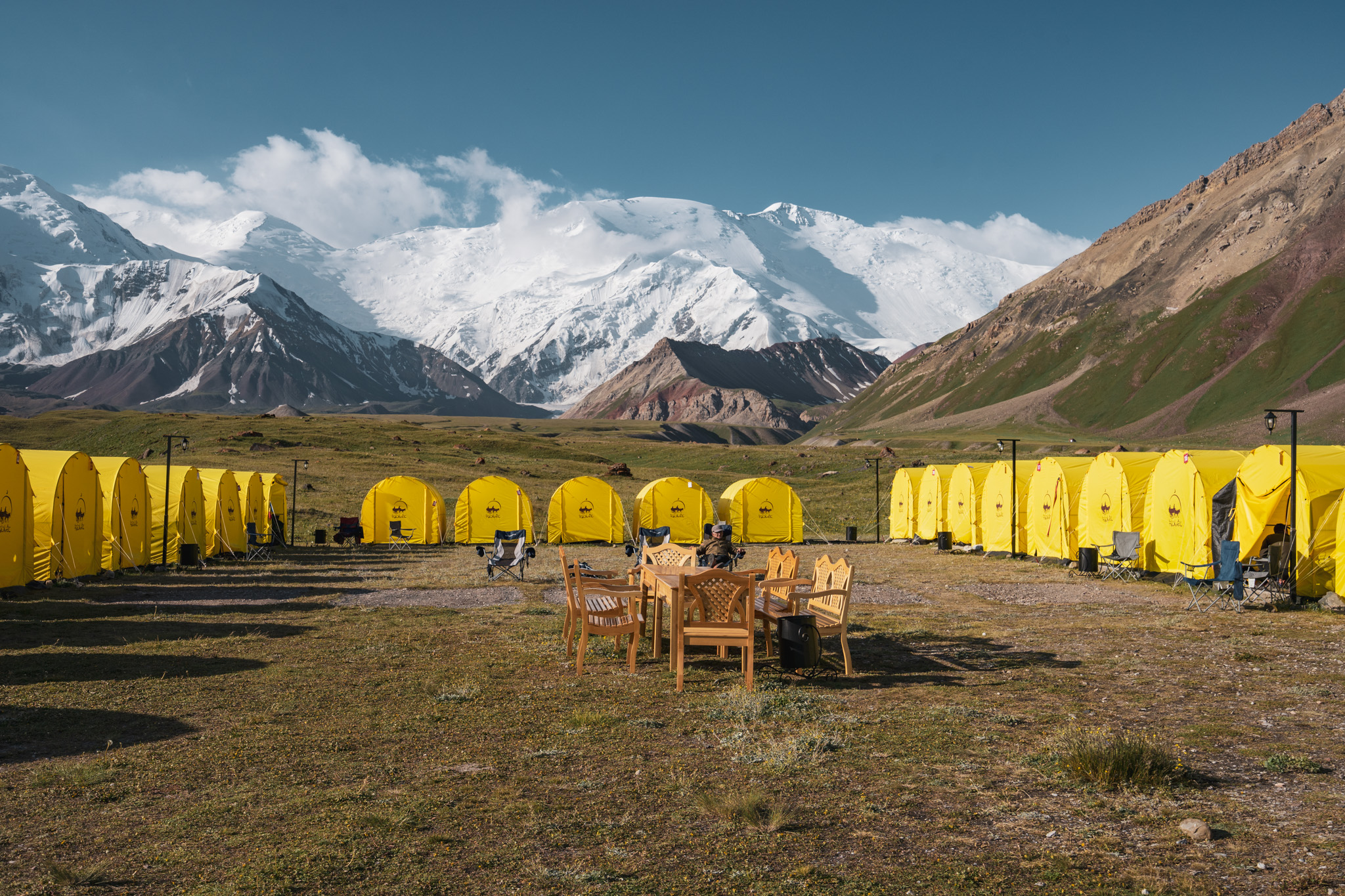
Getting Around Kyrgyzstan
31 – Marshrutkas go almost everywhere: Marshrutkas (minibus) are the backbone of transportation in Kyrgyzstan and other Central Asian countries. They connect almost all cities and towns and are usually the cheapest mode of transport when there isn’t a train available.
Marshrutkas are cheap – for example, a 7-hour marshrutka ride from Bishkek to Karakol costs 350 som ($4.5). They operate on a fixed-price system, so you don’t need to worry about haggling with the driver.
The main downside to marshrutkas is that they can sometimes be a bit hot and cramped, which can be quite uncomfortable in the summer months.
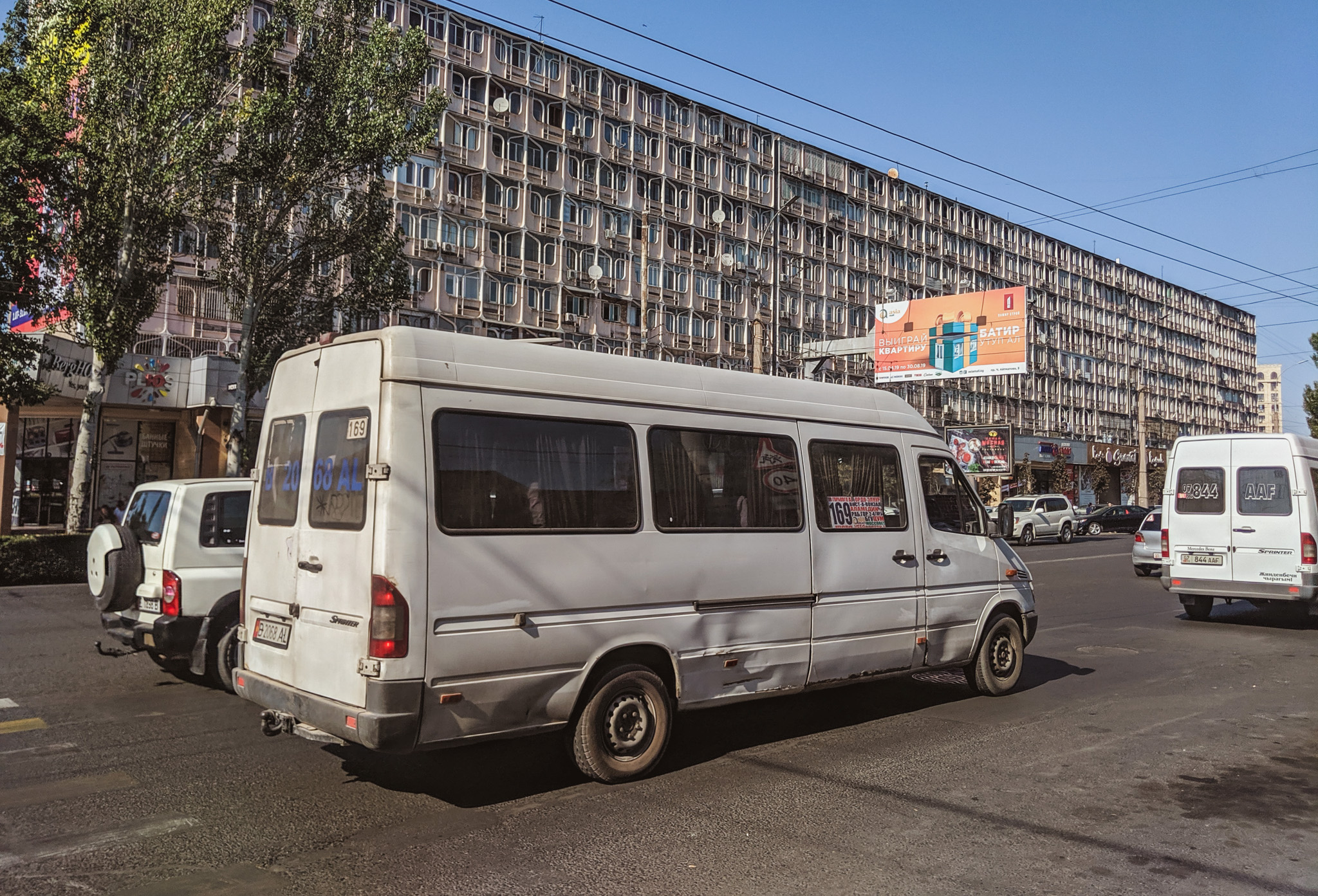
32 – Here are some of the most useful marshrutka routes:
- Bishkek to Karakol – 7 hours, 350 som
- Bishkek to Naryn – 5 hours, 350 som
- Karakol to Naryn – 7 hours, 450 som
- Bishkek to Cholpon-Ata – 3.5 hours, 250 som
- Osh to Sary-Mogul – 3.5 hours, 240 som
- Osh to Jalal-Abad -2 hours, 120 som
33 – Shared taxis are a more comfortable alternative to marshrutkas: If you’re looking to travel in a bit more luxury, you can opt for a shared taxi.
You can usually find a shared taxi to the same destinations that marshrutkas run (and sometimes even smaller destinations), but you will need to wait until all seats in the car are filled before it departs (unless you want to pay for them all).
Shared taxis are typically a bit more expensive than a marshrutka, but are much more comfortable. You can often pay the driver a bit extra to sit in the front seat so that you’ve got a great window view.
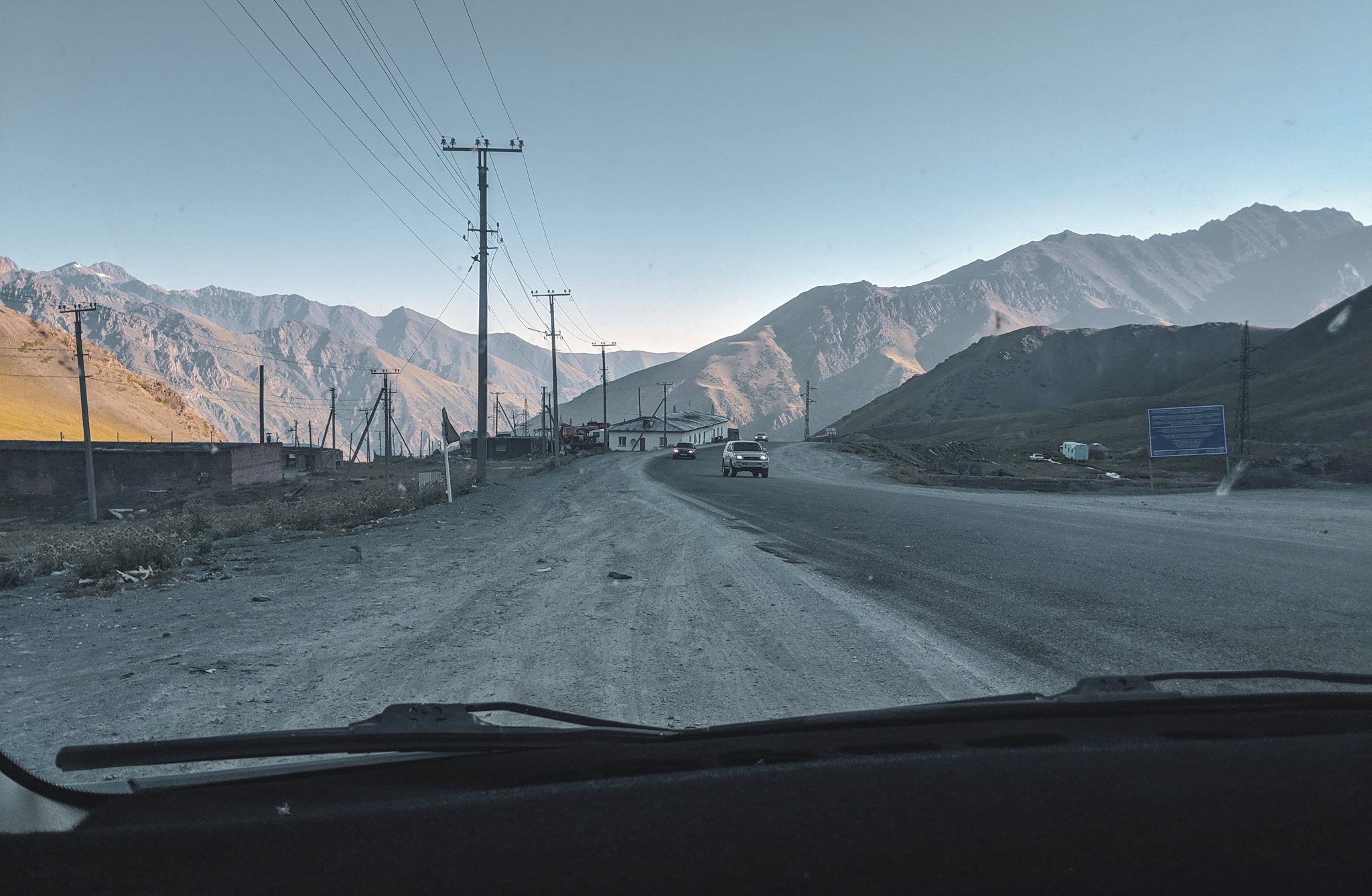
34 – Bishkek to Osh takes an entire day: The journey from Bishkek to Osh is a long one. While just 670 kilometers, the trip can take up to 14 hours due to the windy mountain road that connects the two cities.
Try to travel this route during the daytime – it’s absolutely stunning. There are cheap domestic flights between the two cities if you don’t have enough time to spend an entire day in a car.
35 – There aren’t any useful train routes: Bishkek has a train station, but it is of little use for most travellers. There is a direct train from Bishkek to Moscow that takes 3-days, which could be useful if you want to get back to Europe overland.
There’s only one domestic train route in all of Kyrgyzstan, and it is the Bishkek – Balykchy line that takes about 5 hours. This train takes much longer than a marshrutka on the same route but it would be a nice experience if you’re into rail travel.
36 – Within Bishkek, use Yandex Taxi to get around: I’m sure you’re familiar with ride-sharing apps like Uber at this point. Yandex Taxi is a Russian ridesharing app that works in Bishkek, and I highly recommend you use it to get around the city. Rides are typically just 70 – 150 som and you can choose your pickup and dropoff locations on the app. It has an English setting, so no need to know Russian.
37 – Domestic flights are cheap: The busiest domestic flight route is between Bishkek and Osh, and one-way tickets are typically around $35 between the two cities.
Consider taking this flight if you’ve already seen the overland route between Bishkek and Osh and want to save some time.
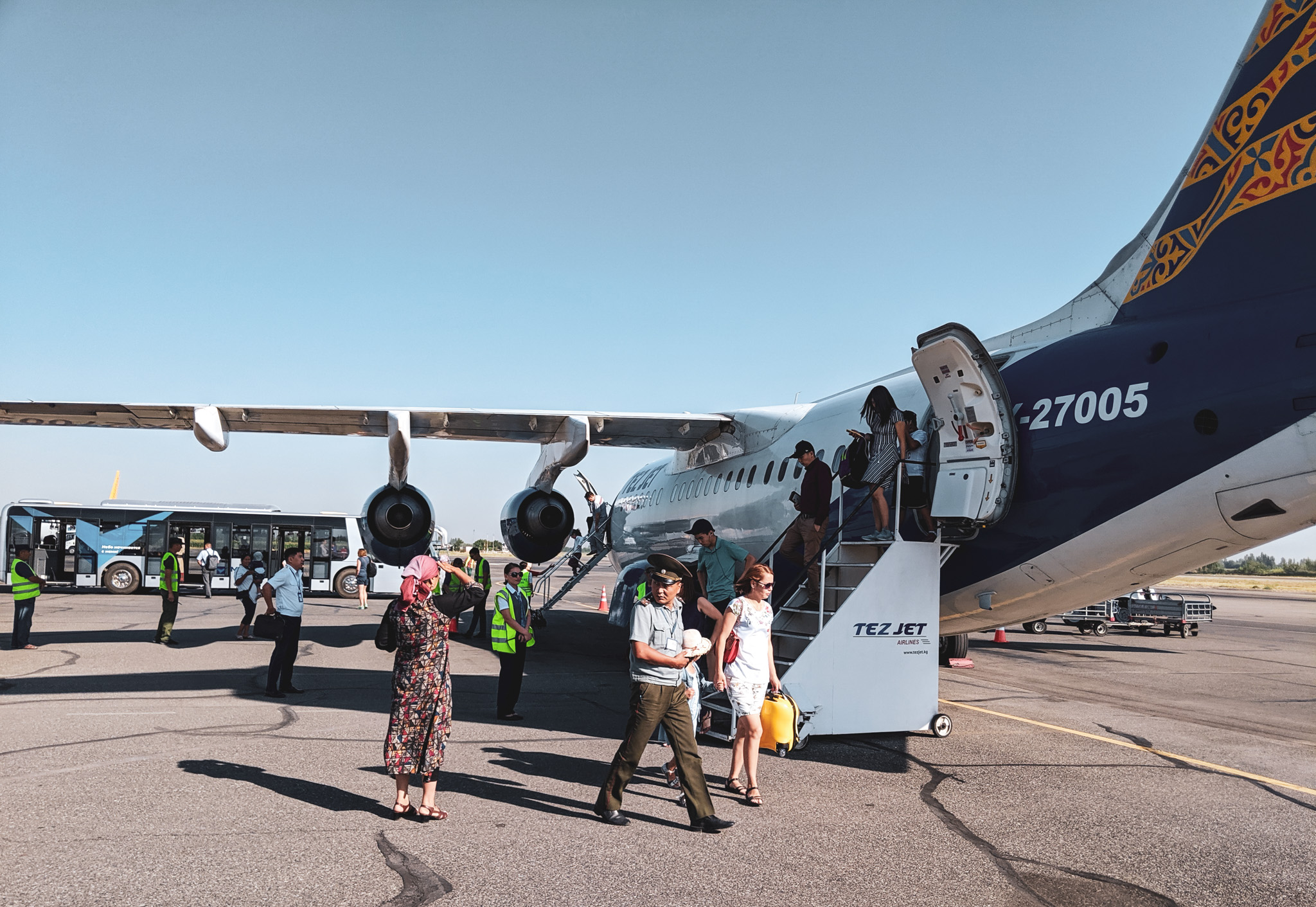
Accommodation in Kyrgyzstan
38 – There are hostels in all of the major touristy towns: Kyrgyzstan has a well-developed network of backpacker-style hostels in all of its main cities. They’re a great place to meet other travellers, and they’re also very cheap.
Here are my favourite ones:
- Interhouse Bishkek – A modern and popular hostel located right in the center of Bishkek, this is the perfect place to relax when you’re in Bishkek.
- TES Hotel Osh – I’ve stayed at TES Hotel four times now. It has both private rooms and dormitories, and even a large outdoor area where you can pitch a tent. Breakfast is a tasty buffet. This is by far my favourite place to stay in Osh.
- KbH Karakol Based Hostel – A medium-sized hostel right in central Karakol that’s run by friendly staff. They can help you with any trekking or transportation info that you need. Highly recommend this hostel!
39 – Homestays in Kyrgyzstan are great: There are a ton of fantastic homestays throughout Kyrgyzstan. Do some searching on your destinations and you’ll come across some well-reviewed ones.
One homestay that I really liked was the “Hotel Tatina” in Sary-Tash – 500 som per night including dinner and breakfast, and it was run by a super friendly family.
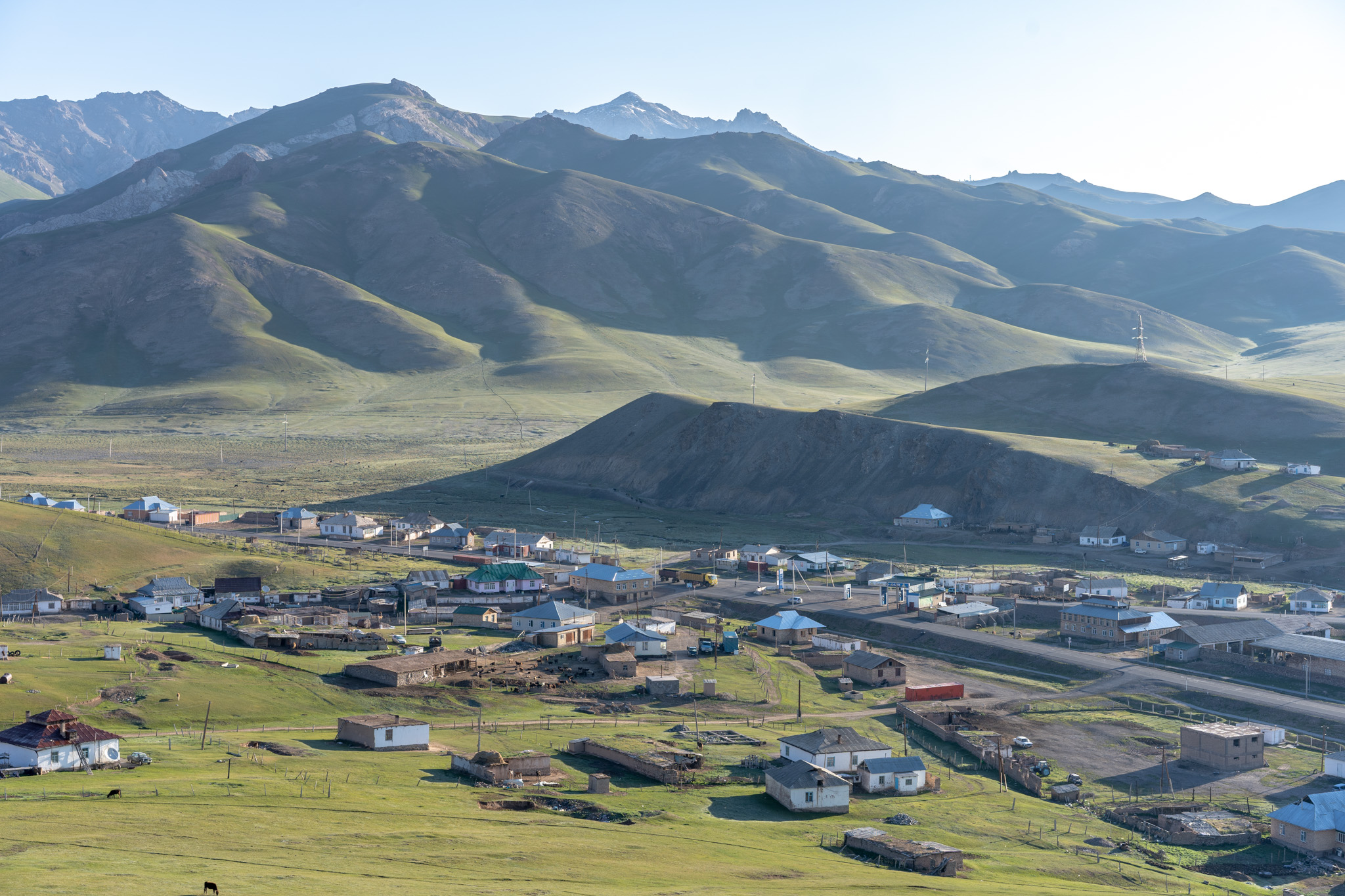
40 – Stay in a yurt at least once: Yurts are circular white tents that dot the countryside of Kyrgyzstan. They’re the traditional home of the nomadic people across Central Asia, and staying in one is a must-have experience if you’re in Kyrgyzstan.
41 – Airbnb is another good option in Bishkek: Airbnb isn’t super popular yet in Kyrgyzstan, but Bishkek does have a few decent options available. If it is your first time using Airbnb, you can use my referral link to get up to $65 off of your first booking!
GET $65 OFF YOUR FIRST AIRBNB BOOKING
Best Time to Visit Kyrgyzstan
42 – Kyrgyzstan can be visited year-round: No matter what time of year it is, you can visit Kyrgyzstan. The country is always beautiful, and each season brings a new look to its incredible landscapes. However, depending on your interests, there are certain seasons that are better than others.
43 – Summer is definitely the best time to visit if you’re into outdoor activities: If you want to do any sort of mountaineering or high-altitude hiking when you’re in Kyrgyzstan, then summer is the best time to visit.
Kyrgyzstan has a short hiking season – high-altitude yurt camps are only usually open in July, August, and early September. Outside of these times, conditions will be harsher and you’ll need to bring your own tent.
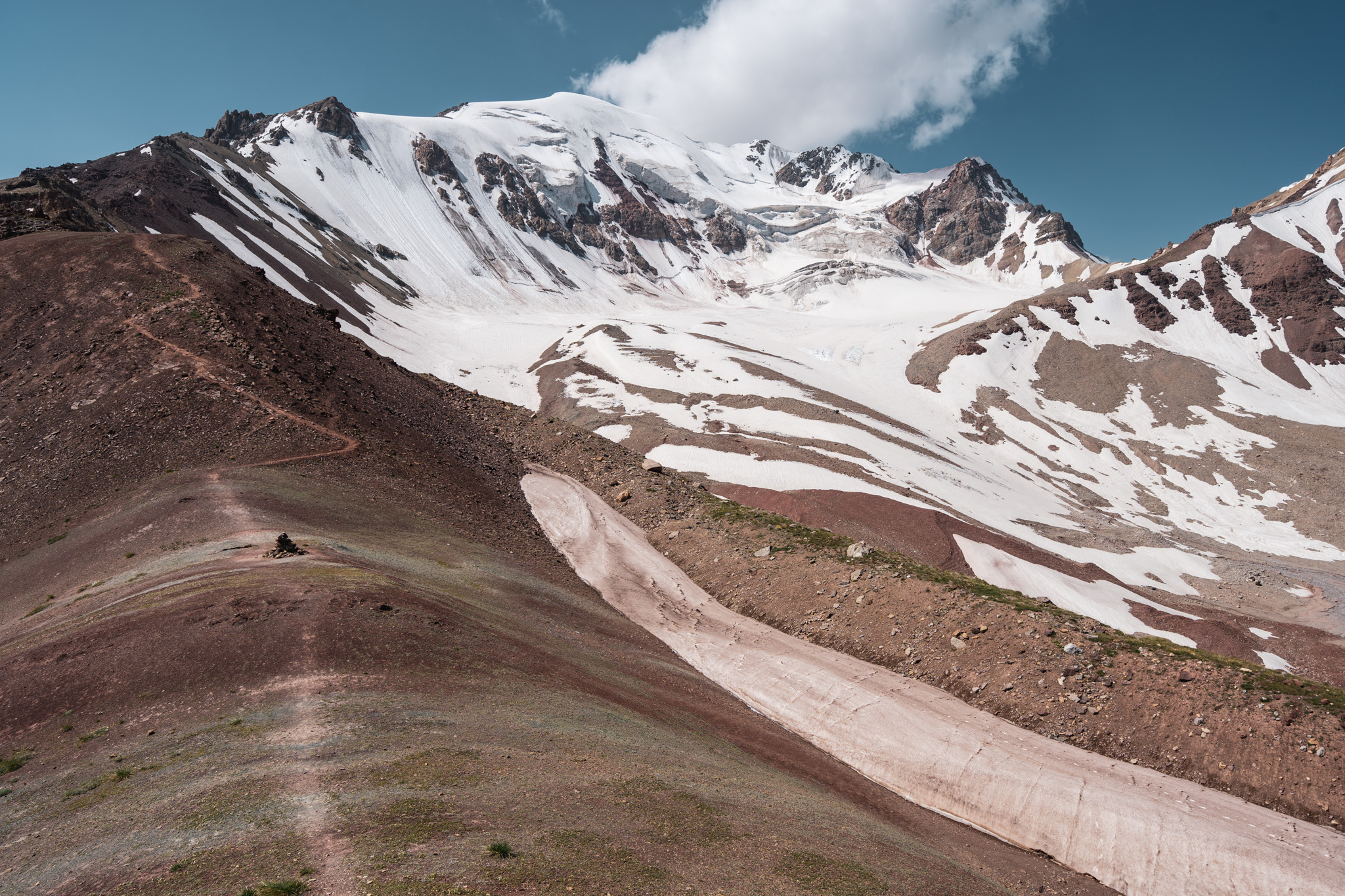
44 – In Autumn, Kyrgyzstan turns beautiful shades of orange and yellow: Autumn is a beautiful time to visit Kyrgyzstan, as the green mountains turn golden and the temperatures in the cities drop a bit.
If you’re into photography, you’ll love it at this time of year.
45 – Spring is a good time to visit, although many hikes will still be snow-covered: Spring in Kyrgyzstan is fairly warm in the cities, but still cold in the mountains. It’s a nice and quiet time of year to visit.
46 – If you’re into skiing, consider visiting Kyrgyzstan in the winter: Winter in Kyrgyzstan can be cold, especially in the mountains. However, the country has some awesome skiing near Bishkek and Karakol, so consider a winter visit if you want to hit the slopes. There aren’t many other tourists around in the winter, so you’ll likely have the whole place to yourself!
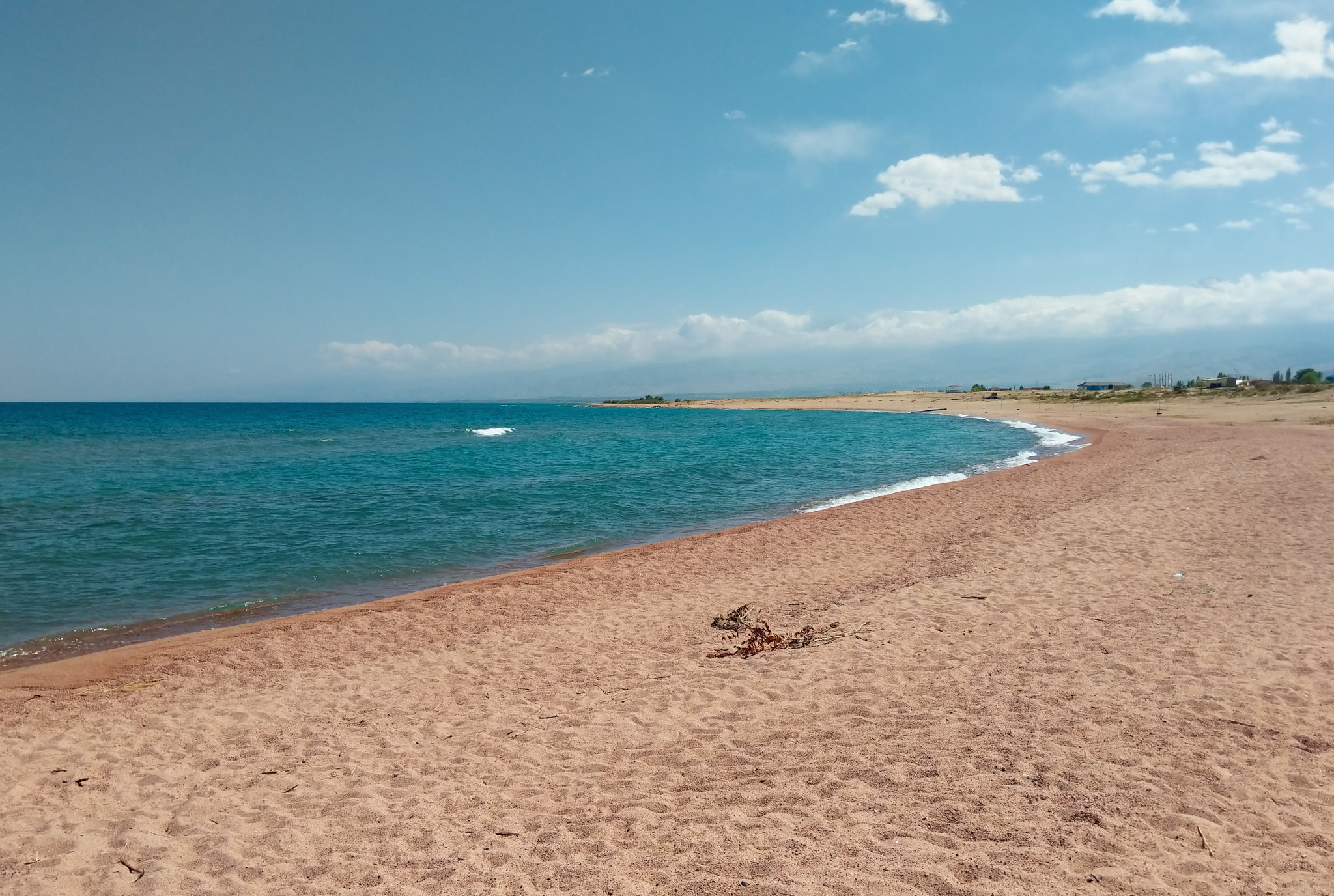
Internet & SIM Cards in Kyrgyzstan
47 – Internet access in Kyrgyzstan is very good: Kyrgyzstan has some pretty amazing internet when you consider that it is a mountainous developing country.
It’s about on par with Kazakhstan in terms of pricing and speeds, and far better than in neighbouring Uzbekistan and Tajikistan.
48 – SIM cards are cheap: One of the first things you should do when you arrive in Kyrgyzstan is pick up a SIM card. There are a few major telecom companies, including Beeline, O!, and MegaCom.
My preference is O!, as I’ve found them to have the best signal in mountainous areas (even at Lenin Peak Base Camp!). They have a 40GB data plan available for 350 som – should be enough even for heavy users.
There are telecom branches selling SIM cards all over Bishkek and Osh – just be sure to bring your passport.
49 – WiFi is everywhere: If you don’t want to bother with a SIM card, don’t worry. You won’t have any issues finding WiFi in Kyrgyzstan. Even the tiny homestay I stayed at in Sary-Tash (3,000 meters above sea level) had great WiFi.
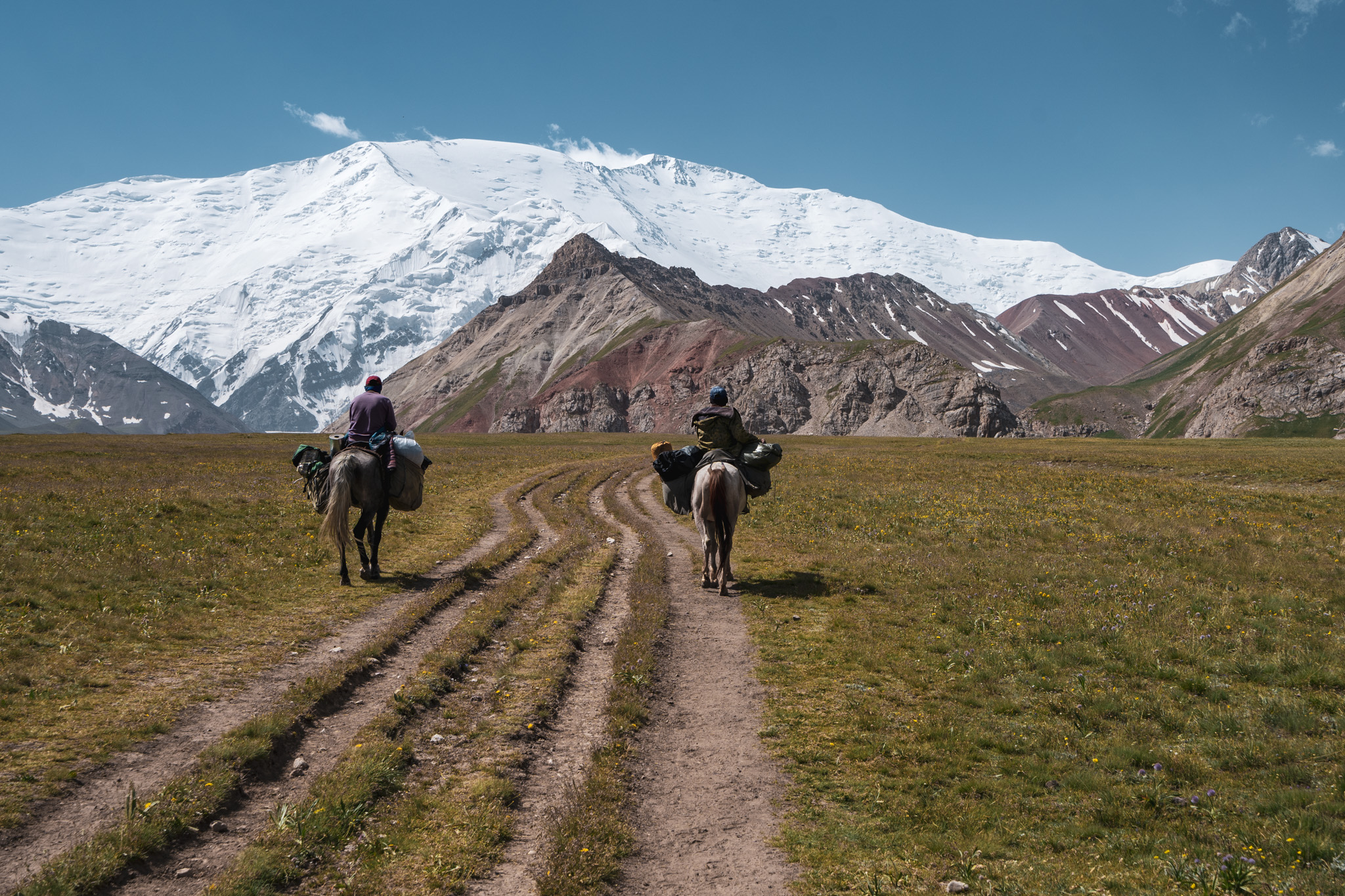
Solo Travel in Kyrgyzstan
50 – Kyrgyzstan is a great solo-travel destination: My two months in Kyrgyzstan was spent solo-travelling, and I found it to be a great destination for solo backpackers. It’s easy to meet other people in hostels, and locals are super friendly to foreigners as well.
Budget for Backpacking Kyrgyzstan
51 – Kyrgyzstan is a cheap country to travel in: Typical travel costs in Kyrgyzstan are around $20 – $40 per day , depending on what type of accommodation you choose and what mode of transport you opt for.
52 – This is what typical costs while travelling in Kyrgyzstan will look like:
- Accommodation – $5 to $10 per night for a hostel dorm or homestay is a typical price. This usually includes breakfast as well. Airbnb and hotels will be a bit more expensive.
- Food – $5 to $10 per day. Local street food is very cheap, but it’s easy to splurge a bit when you’re in Osh or Karakol. Coffee in a cafe is usually around $2, and a beer at a bar is $2-3.
- Taxis – Taxis around Bishkek don’t usually cost more than $2 for normal trips. Use Yandex Taxi so you don’t need to negotiate with the driver.
- Flights – Flights between Bishkek and Osh start at around $35 one-way.
- Entrance tickets – As most sights in Kyrgyzstan are based around nature, they’re usually free or have a low park entrance fee (just a couple of dollars)
- Visas & Permits – Most nationalities don’t need a visa to visit Kyrgyzstan, so this will be $0 for most people. Certain border regions of Kyrgyzstan require permits (easily arranged), and they tend to cost around $10 or $15.
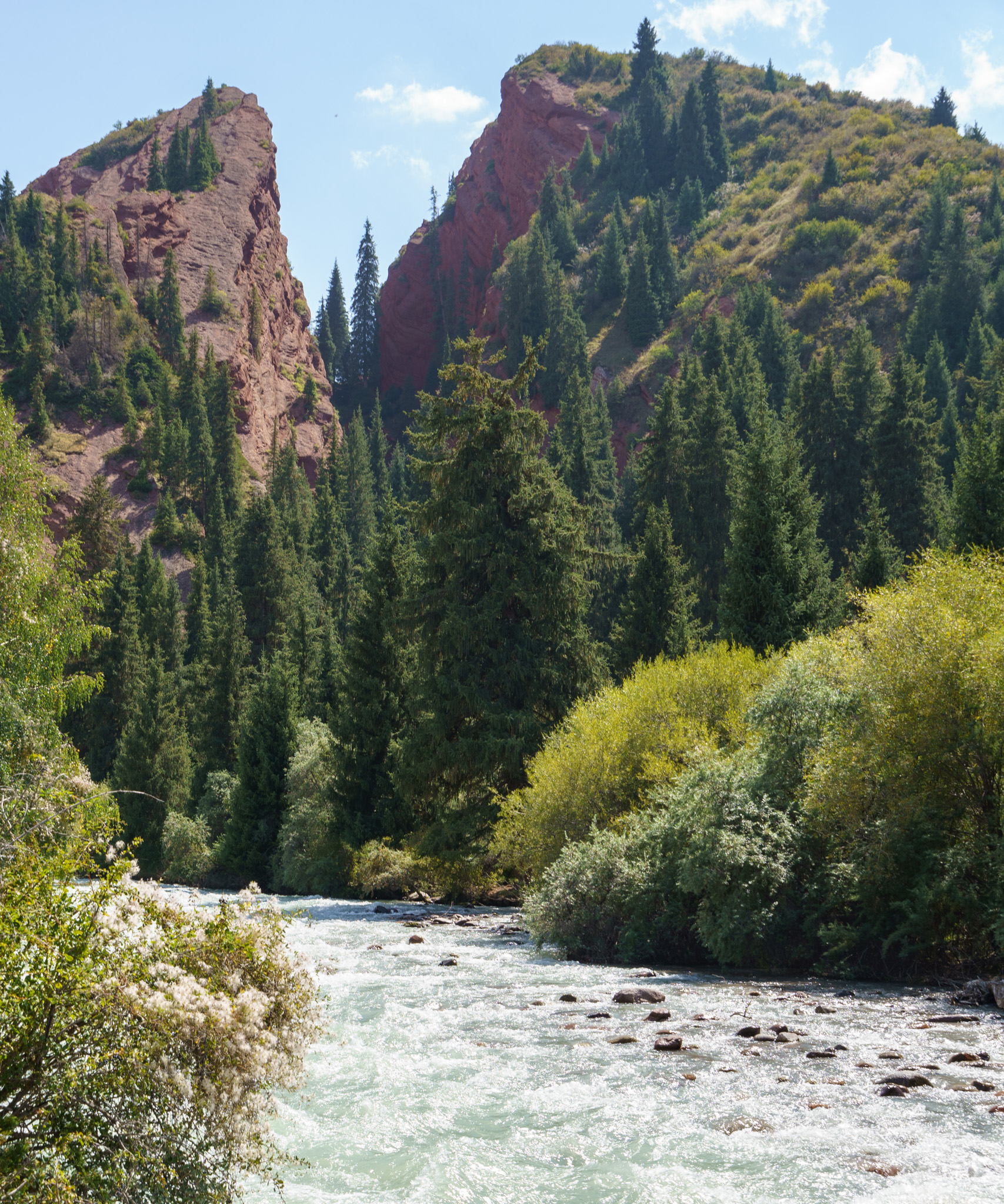
Kyrgyzstan Backpacking Guide Wrap-up
I hope that this backpacker’s guide has helped you plan your trip to Kyrgyzstan! It’s a fantastic country, and I really hope that more people start visiting it.
If you’ve got any questions about Kyrgyzstan, feel free to ask in the comments below this post.
In the meantime, why not check out some of my other posts about travelling in Central Asia?
- 10-Day Pamir Highway Itinerary: A Backpacker’s Guide
- The Perfect 2-Week Uzbekistan Itinerary
- How To Visit Burana Tower From Bishkek
- Useful Tips for Travelling the Silk Road (Backpacker’s Guide)
- The Ultimate Guide to Climbing Lenin Peak
- A Guide To Visiting Afghanistan’s Wakhan Corridor
- Travel in Afghanistan: The Ultimate Backpacker’s Guide
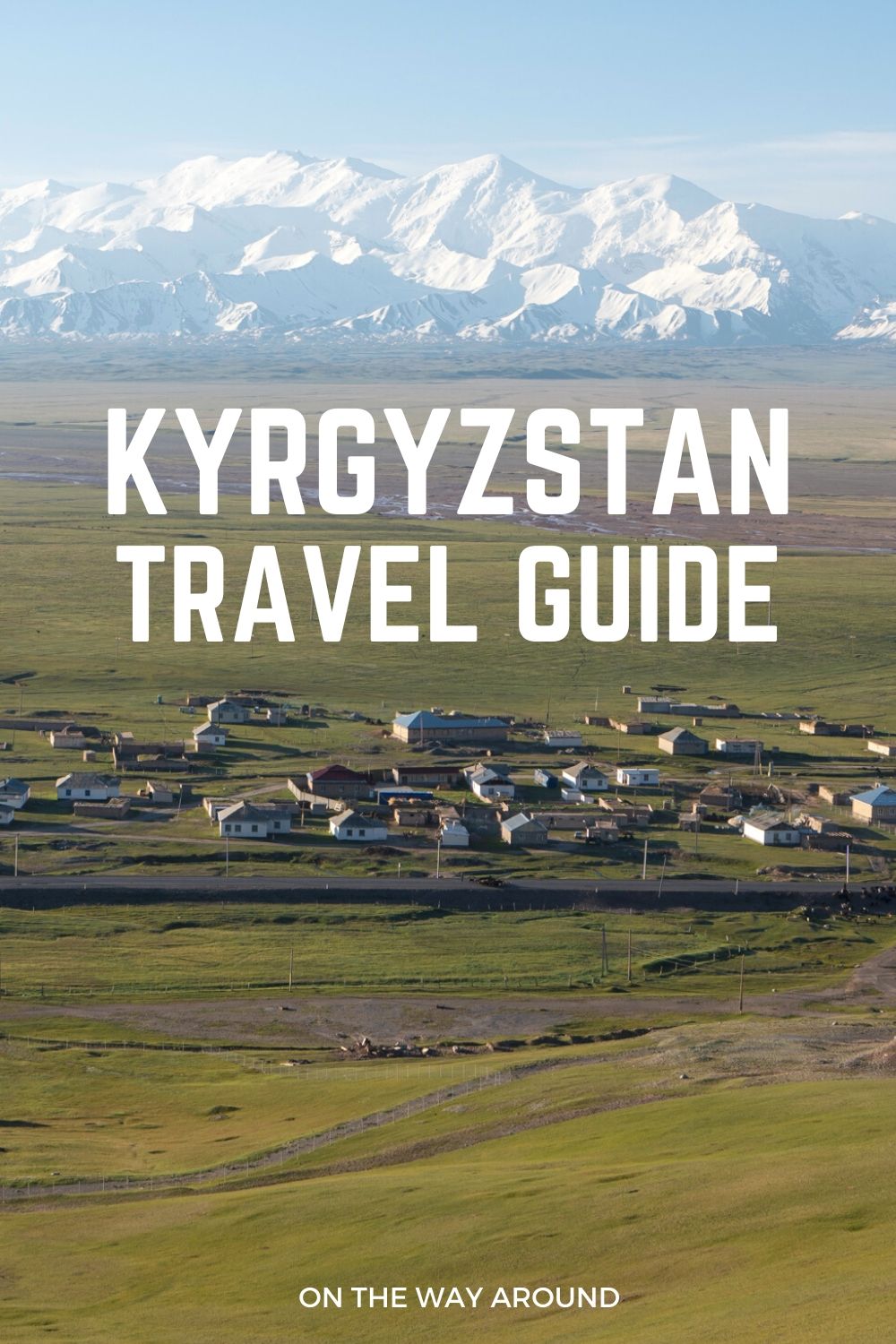
Yay transparency! There are affiliate links in this guide. If you book or buy something using my links, I’ll make a bit of money at no extra cost to you.
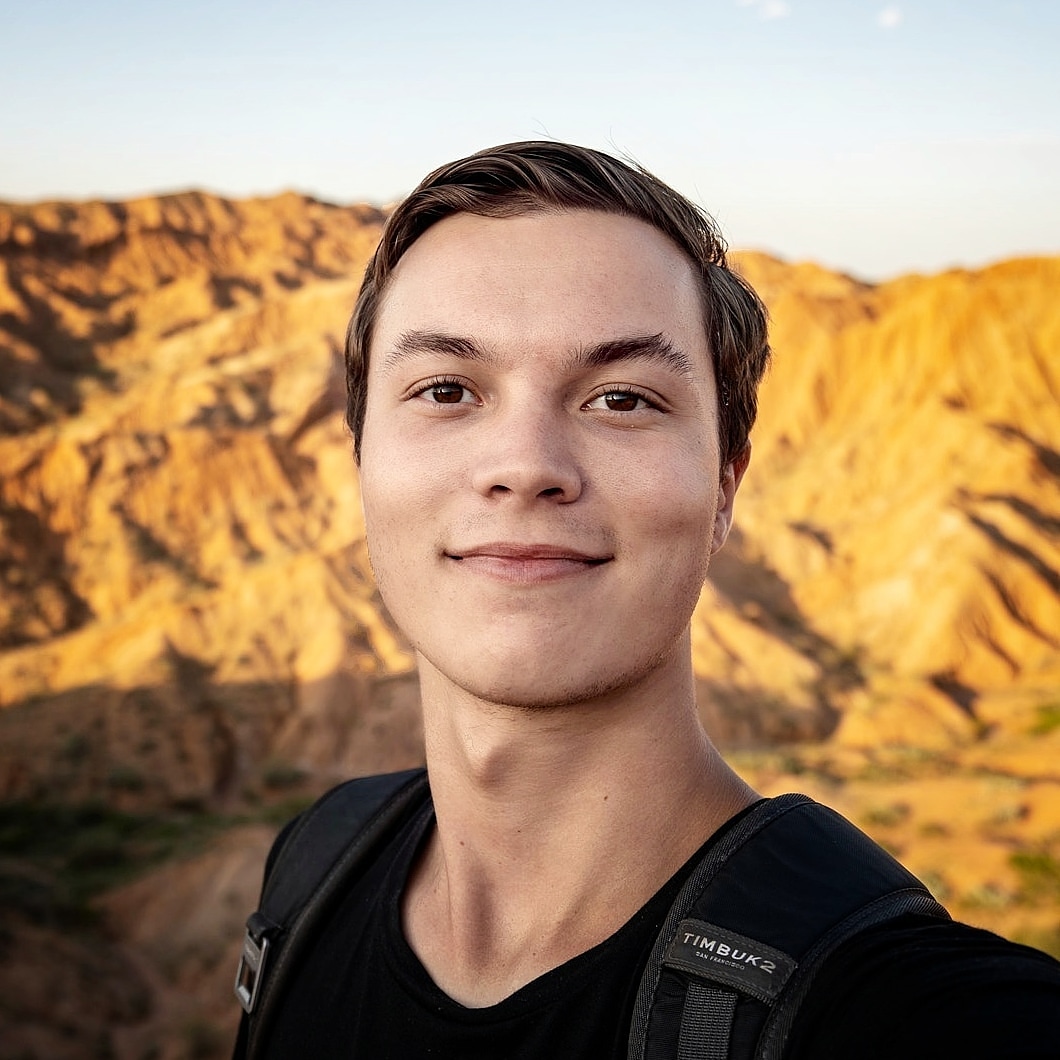
21-year old Canadian dude who loves to visit off-the-beaten-path places, climb tall mountains, and try delicious foods.
Read more about me
Want more like this?
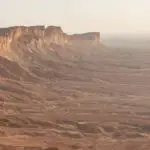
Leave a Reply Cancel reply
Your email address will not be published. Required fields are marked *

IMAGES
VIDEO
COMMENTS
If you are planning to solo travel in Asia, Central Asia can be a challenging region to navigate your way around but Kyrgyzstan is one of the easiest countries in the region. In this article I share the best things to do in Kyrgyzstan including recommended accommodation and how to get around.
You want to travel alone through Kyrgyzstan and wonder if it's a good idea? Find out here everything you need to know about a solo trip through Kyrgyzstan.
Kyrgyzstan solo travel is incredibly rewarding. With a sturdy vehicle, every corner of the country can be uncovered, discovered, and explored, from unequaled vistas to occasional old-fashioned villages with that ‘old-time’ feel.
Kyrgyzstan is generally safe for solo female travelers, however, caution should always be taken. The people are friendly and hospitable, but language can be a major barrier as English is not widely spoken. It is also advisable to dress modestly due to the Islamic culture prevalent in the country.
Solo Travel in Kyrgyzstan. 50 – Kyrgyzstan is a great solo-travel destination: My two months in Kyrgyzstan was spent solo-travelling, and I found it to be a great destination for solo backpackers. It’s easy to meet other people in hostels, and locals are super friendly to foreigners as well.
This Kyrgyzstan Travel Guide brings together all my knowledge and experience. I cover everything from visas, entry requirements and safety to transport, accommodation, food, useful apps and cultural etiquette to help you prepare your Kyrgyzstan trip to the fullest!